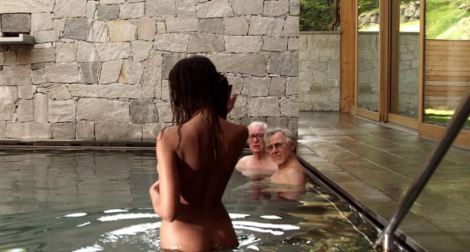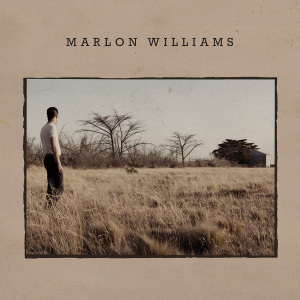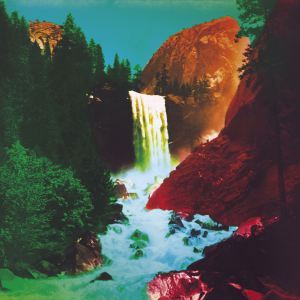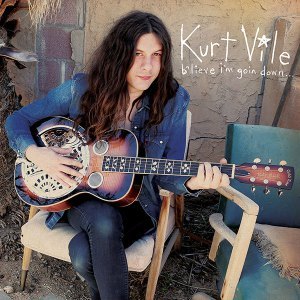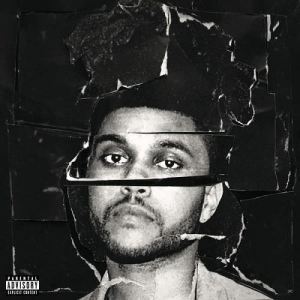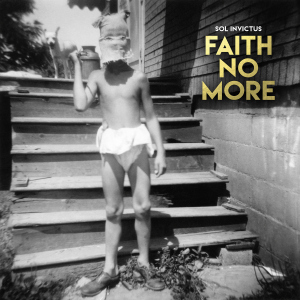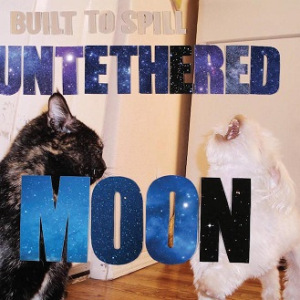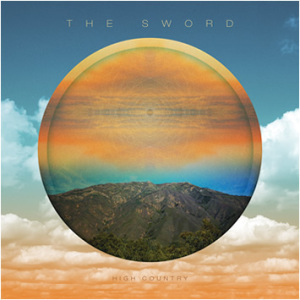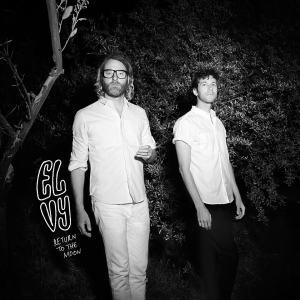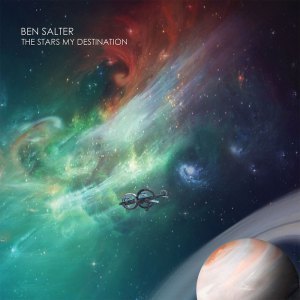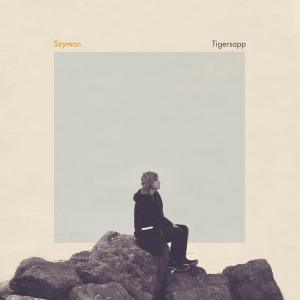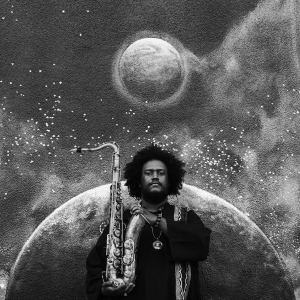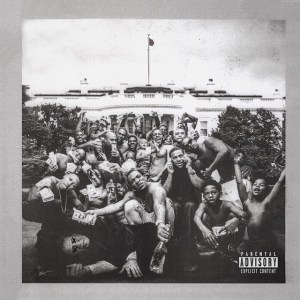Nick Milligan's Blog, page 5
May 16, 2016
Gareth Liddiard: aliens, rap and weirdness

To say The Drones have entered darker and weirder territory on their latest record, Feelin Kinda Free, is a foreboding statement. The band, officially now a five-piece, have been gleefully mutating into strange and brilliant musical anarchists since their 1997 inception.
But they’ve found a way.
In this candid conversation I discuss Feelin Kinda Free with The Drones’ wry and wicked mastermind, Gareth Liddiard. From extraterrestrials to the influence of the Wu-Tang Clan, we cover a range of subjects – each channelled through the songwriter’s unhinged door of perception.
How did the band’s approach to the writing of Feelin Kinda Free compare to I See Seaweed?
We just wanted to get away from the tropes. With the last record we recorded it sitting around in a circle, and we wrote it like that. Well, I wrote it and then we figured it out while sitting around in a circle. When you’re working like that, a lot of the shit you play is for expedience because you have to keep up with everyone else. That sounds like it would suck. Basically, the thing is you do what you do. I wanted to get away from that. I wanted everybody, rather than do it off the top of their heads, actually consider what they’re doing and maybe do something they wouldn’t do. It was really good. Just because you play guitar doesn’t mean you need to “play guitar”. It took a while but everyone got it in the end. Everyone did the “what wouldn’t I do” and then they did it. It’s pretty cool, and it still sounds like us.
That experimentation is evident. It’s quite a challenging listen.
You have to listen to it ten times, but that’s alright. There’s not many records like that anymore. Once upon a time my generation were trained to deal with that kind of stuff. With shit like Led Zeppelin or Sonic Youth or Jane’s Addiction. Everything now is fuckin’ retro, so it’s all been done – you already understand it. The minute you press play you know whether it’s going to sound like early ’70s Rod Stewart or the New York Dolls or Joy Division. You already get that. We’re not working on that. We’re working on what it was like to first hear Joy Division, where it’s “What the fuck is this?” You have to figure your way through it.
The only thing I’ve come to expect from a new Drones album is the unexpected, so you’ve certainly created that anticipation from album to album.
I See Seaweed kind of wrapped up it all up – that’s what we sounded like up until that point. We can do that. With something like the new album, if people go, “Oh my god, they’ve changed!”, then come to the live show. It’s not that different. In a weird way, we’ve always meant to do that, I’ve always meant to do this album, where it’s completely weird. When we first started we were so strangely weird that we couldn’t get a gig. We had to normalise to get in the door.
Last year you toured your classic album Wait Long By The River and the Bodies Of Your Enemies Will Float By. Did taking stock in that older material influence your decision to push the envelope even further this time?
Not really, we were 75 per cent of our way through the [new] album by the time we did that Wait Long thing. And we’ve been playing all that shit for years, so people sort of think “well, they’re having to go back and relearn or reconsider the old shit” but it’s like, man we’ve been playing that for fuckin’ 10 years. So it was one rehearsal then off to the Opera House. There wasn’t really much to it.

THE DRONES: Christian Strybosch, Gareth Liddiard, Dan Luscombe and Fiona Kitschin.
What was it like having drummer Christian Strybosch back in the band this time. Was there a sense of nostalgia?
Yeah, there was. It was quite trippy because the last time he was in the band was 2004. He went and got a life for 10 years and did everything he felt he needed to do. When we were doing music, it was all-encompassing. Although he’s a really natural musician and a very, very musical guy – he’s a musician, you know – he wanted to have a family and stuff like that. So he couldn’t come on tour with us and all that shit, those big long tours we were doing at the time, so he went and did everything that he needed to do, planted his wild oats and set down roots, and got that all done in 10 years. Got a career and shit.
It was funny, because Mike [Noga] left and Fi [Kitschin, bassist] just got on the phone – and we’ve been friends with him [Chris] for the entire decade he hasn’t been in the band. We hang out. He would often get a phone call from us. This time Fi rang him and said, “Hey, Chris, how are you?” and he’s like “Oh yeah, good,” and she’s like, “I want to ask you something…” and he went, “…yes?” He was really keen to get back in.
So there was that sense of nostalgia but it was also refreshing because he was so unjaded. The biggest crowd he would have played to in The Drones would have been something like 350 people at the Tote. Then his first show was like 3000 people, some shit like that. So he was really excited and that rubbed off on us.
How does Chris’ approach to the drums compare to Mike’s?
Chris would be more jazzy, or something… Mike would be more modern. Mike played in a band called Legends of Motorsport, which are like a really cool, sort of… they border on metal. Where as Chriso likes jazz, just crazy spaz-out old-school drums. But he was also really into programming drums and using samples and basically treating it more as a hip-hop guy would, or someone like Radiohead would, or Deerhoof or Missy Elliott – although he’s more traditional, in the jazz sense, he’s not traditional at all. So that was really cool, because a weird band has a weird drummer. If you have a normal drummer, you’re a normal band. And Mike was never keen to get off the acoustic kit. So we were like, “Man, we need to change the drums up because we need to change the band up” and was like, “Cool.” He already had an electronic drum kit, he was into it. He loves Joy Division, he loves Radiohead, he loves Missy Elliott. He likes hip-hop.
“There’s a bunch of websites where they rate it one of the top ten murder mysteries of all time and no one in Australia knows about it. If it had happened in America, we’d all know.” – Liddiard comments on the Taman Shud Case.
It’s funny you mention hip-hop because I listen to some of these songs and I hear that influence in how you spit the lyrics, and the patterns and rhythms. Has rap been an influence on you this time?
I wanted to not have ten-minute songs anymore, because we’d been there and done that. I guess to compress something down you have to edit shit down and that format, something like the Wu-Tang Clan, a word spew in three and a half minutes, it works. If you’re going to spit that much shit out you have to be rhythmical, and really groovy. Someone like GZA, or even someone like Ice Cube earlier on, good rappers are like good drummers, their tongue is like a snare drum. It’s amazing.
So, yeah, I went to that. We’ve all been listening to that shit since high school. Wu-Tang is twenty years old. We’ve been listening to Kate Tempest, who’s a chick from London, a hip-hopper, and, I don’t know… for some reason it just wound up hip-hop. We had a studio and the friend of ours who was in the studio too had a lot of hip-hop gear so we used that. And it’s a different way of writing. You can write on a guitar and that’s completely different to writing on a piano. Writing on a sampler is a different thing to that altogether.
Do you keep notebooks of lyrical ideas? Or do you write as required?
I start afresh, I do it all on a laptop and then at the end I delete whatever I didn’t use.
Anything that would forgive us and want to be our friend, even after knowing about the atrocities we’ve committed against our own kind, if aliens wanted to know us, that’s really fucking scary.
The record’s first single is ‘Taman Shud’, a devastating portrayal of the apathy of many Australians right now. Where did you get the idea to tie the song, thematically, to the ‘Taman Shud’ mystery of the body found on a South Australian beach in 1948?
Well, it’s a classic case of cultural cringe. It’s one of the most interesting unsolved murder mysteries of all time, it’s treated like that by boffins in the US and England – there’s an English band at the moment called Taman Shud. There’s a bunch of websites where they rate it one of the top ten murder mysteries of all time and no one in Australia knows about it. If it had happened in America, we’d all know. Everybody has heard of Ted Bundy and all sorts of weird shit, and conspiracies, but they’ve never heard of that. Because it’s Australian. People [Aussies] are just so disinterested in themselves and feel icky when they think about themselves. It’s there for that reason. This happened. This is weird. It’s really interesting. Everyone else knows about it. You don’t. And the verses are saying, while you’re there, think about this [too].
Has your approach to lyrics, in terms of imagery and metaphor, changed much over the years?
I guess I was learning along the way, so… yeah, sometimes you over shoot, sometimes you under shoot, it’s all the same thing. If you hit, that’s the only thing that matters. I guess I just sort of hit more now, that’s all. Sometimes you have to over shoot and under shoot just to know where the target it. It’s a learning process. I think I’ve found my equilibrium, otherwise there’s not much of a change.
I really love the new album’s final track, ‘Shut Down SETI’. There was a space reference on the previous record with ‘Leica’. Where did the idea of unfriendly aliens come from?
Last year, the last 18 months, SETI, which has been around for 30 years, maybe more, have decided to start broadcasting. For 30-odd years they’ve been listening and they haven’t heard anything, so they’ve thought maybe it’s time to broadcast. Even Hawking said an interesting thing, where he was arguing with the woman that runs SETI, he said, “Don’t fucking broadcast, you don’t know what you’re dealing with.” Even though it’s a long shot that there’s anything out there, he’s sort of saying what do you know about extraterrestrial life? Nothing. So there’s a 50-50 chance that this could be good or bad. If it’s bad, that’s really bad. [Hawking] says to her, “Do you think you’re good?” and she says, “Yeah.” And he goes, “Well, do you eat animals?” and she says, “Yeah,” and he goes, “Well, there you go.” (laughs) You might think you’re good, but animals don’t. Other living things don’t. He’s saying, you’re broadcasting out into that. There’s a 25 per cent chance that it will be okay. And, the thing is as well, for 30 years no one’s replied to us and you could say, “That’s because there’s no one there.” But there’s also the chance they are there but they’re not replying for a reason. Maybe they know, they’ve learned a lesson in the past about replying. There’s all sorts of reasons not to do this. It’s fucked up. If you did get in contact with something, it would know about us. If it came here it would know about the Holocaust, and it would know all the awful things. It would also know all the brilliant things we’ve done. Anything that would forgive us and want to be our friend, even after knowing about the atrocities we’ve committed against our own kind, if aliens wanted to know us, that’s really fucking scary. That is an amoral alien species and you don’t want to fuck with that.
But then it’s such a silly song. Why wrote a song about that and take it seriously? It’s like that ‘Oh My’ song. There’s a bit of mischief there because it’s such a stupid topic.
What’s next for The Drones after this Australian tour?
We’re going to do to the Australian tour and then we’re going to go to Europe, and then we’re going to come back. In the breaks we’ll be recording. I’ve got to start writing songs. So… yeah, just more of the same.


April 28, 2016
ALBUM REVIEW: MELODY POOL – Deep Dark Savage Heart
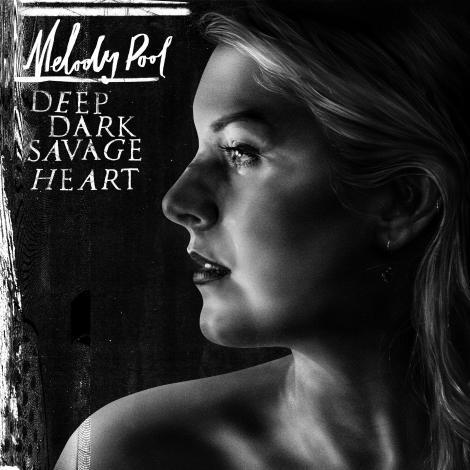 MELODY POOL
MELODY POOLDeep Dark Savage Heart
4.5/5
Melody Pool’s impressive debut album, released three years ago, was forged in the flames of heartbreak. The pain-laced lyrics were those of a young woman not just suffering the loss of someone she loved, but the suffocating sting of betrayal. Cathartic and aching, the album’s centrepiece, ‘Henry’, was a mature and fatalistic distillation of her anger and hurt. But, conversely, The Hurting Scene‘s radiant melodies and arrangements were invariably upbeat, belying the emotional weight within.
Deep Dark Savage Heart is a far different beast. It’s a dark folk record, cast in shadowy minor chords, and a work of staggering beauty. The arrangements and melodies dance and twirl beneath the moonlight in a synergic embrace.
But while they have contrasting tones, the records share a common thread. There is an antagonist at the centre of each album. An unwanted muse that Pool defiantly stares down. On Deep Dark Savage Heart, the spectre is depression. Pool addresses her illness head-on in ‘Black Dog’, where the tropes of an Americana love song are inverted to paint life lived with the incessant animal (“All I can taste is cigarettes and the kiss you left upon my lips“). It’s the most beautiful use of the “black dog” metaphor since the Manic Street Preachers’ classic ‘Black Dog On My Shoulder’.
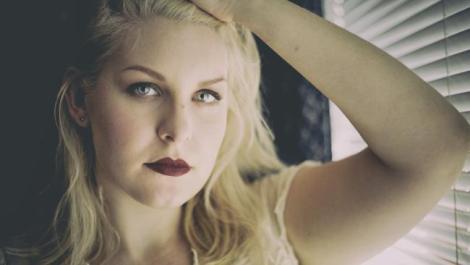 Within the four chambers of Pool’s Savage Heart is a witch’s brew of influences, the resulting elixir closer to the songwriter’s true essence than The Hurting Scene; from her love of dark magic and supernatural imagery, to the work of hero Stevie Nicks. Pool has shed the “country music” tag and emerged a weaver of sultry folk and irresistible pop. Oh, and the cuss words – this record comes with a deserved language warning. The Kurri Kurri-raised artist has a vocabulary to make sailors blush. On the occasions when fucks and shits trip off her honeyed tongue, they make for particularly delicious lyrical punctuation.
Within the four chambers of Pool’s Savage Heart is a witch’s brew of influences, the resulting elixir closer to the songwriter’s true essence than The Hurting Scene; from her love of dark magic and supernatural imagery, to the work of hero Stevie Nicks. Pool has shed the “country music” tag and emerged a weaver of sultry folk and irresistible pop. Oh, and the cuss words – this record comes with a deserved language warning. The Kurri Kurri-raised artist has a vocabulary to make sailors blush. On the occasions when fucks and shits trip off her honeyed tongue, they make for particularly delicious lyrical punctuation.
The album’s arrangements, a collaboration with Nashville producer Brad Jones, who also worked on Pool’s debut, are suitably atmospheric, entwining slinking drums and ghostly stabs and swirls of cello and violin with the singer’s own skilful guitar parts. The more buoyant pop tracks employ synth flourishes, always thoughtful and never overblown.
Pool’s major achievement on her 12-track sophomore album is that each song is individually arresting – it’s something of a masterclass. Pool’s parents could not have bestowed upon their daughter a more accurate first name. The folk artist has a natural gift for melody. Evident, too, is her decade-plus of live experience alongside father and country singer Alby. The prodigal daughter is not a 25-year-old novice who is technically coming of age, still discovering the power and nuances of her voice.
Truly talented songwriters are not necessarily “better” than their peers, but rather blessed with the unearthly ability to disguise how fucking hard it is to write a good tune. Pool makes it seem effortless. If, indeed, the songs on Deep Dark Savage Heart were laboured over during countless candle-lit evenings, drained from the ether into bottles of red wine, it is not evident in these dozen compositions. The simple directness of every track reaches out and squeezes the air from your lungs. Pool’s emotional thrust is always direct.
Deep Dark Savage Heart is laden with numerous goosebump moments. Whether it’s the climax of ‘Old Enough’, in which Pool proclaims with gut-wrenching ferocity: “I’m old enough and I am a woman now” to her smouldering songbird coo on ‘Richard’: “I was so young then, I wasn’t eighteen, not even ignorant that love could take on hate… now I have no body, I’ve only soul…”, the songwriter knows how to write an unforgettable tune. ‘Romantic Things’ is deliberate Fleetwood Mac mimicry (the title track also bears the influence) and when you can pen a tune scarily reminiscent of one of the most successful pop acts of all time, well… now Pool’s just showing off.

Which brings us to ‘Love, She Loves Me’, not so much the record’s centrepiece as it is the most discussable track on the album. It’s from the Leonard Cohen school of songwriting – vivid, inflaming, wry and provocative – and sees the songwriter playfully smite the charming, egomaniac with whom she has shared a bed. It proves ‘Henry’ was no flash in the pan. ‘Love, She Loves Me’ is Pool’s second major “fuck you” takedown anthem. But this is music for adults – had the track appeared on The Hurting Scene, it would have been a Gremlin in a room of Mogwais.
‘Love, She Loves Me’ is Pool’s summation of a futureless relationship based on decent sex: “There’s no point believing there is hope for you and I.” It defines the emotional growth evident across this new record, the verses shifting perspective between Pool and her Lothario. Contained within the song is Deep Dark Savage Heart‘s most searing moment, in which the songstress belts “You tell me she’s the only one that you adore, while I become another one of your little whores” amongst swelling strings.
The album’s epilogue is ‘Better Days’, a sunny reassurance to both listener and singer that there’s light at the end of the tunnel (“I’m casting out my darker days for something I have never known, peace with being alone“). After 11 tracks of pain and desire, the stripped-back closer proves a catharsis. It also features some of Pool’s sweetest guitar-work.
To know where Pool might go next as a songwriter is anyone’s guess. But one thing feels certain – all future grit will turn to pearls.


April 25, 2016
Alison Wonderland: interview
 It’s been a wild year for electronic music producer and coveted party DJ Alison Wonderland. Twelve months on from the release of first record, Run, which debuted at number one on America’s Billboard dance music charts, the Sydney-raised songwriter has taken the world by storm. The AW initials have been emblazoned across big stages at Coachella and Electric Daisy Carnival. Now Wonderland has returned to the regional Australian Groovin the Moo tour, having previously appeared in 2013 as a “filler DJ” between Flume and Midnight Juggernauts. I spoke with Wonderland from Los Angeles, where the writer and cellist spends half her time.
It’s been a wild year for electronic music producer and coveted party DJ Alison Wonderland. Twelve months on from the release of first record, Run, which debuted at number one on America’s Billboard dance music charts, the Sydney-raised songwriter has taken the world by storm. The AW initials have been emblazoned across big stages at Coachella and Electric Daisy Carnival. Now Wonderland has returned to the regional Australian Groovin the Moo tour, having previously appeared in 2013 as a “filler DJ” between Flume and Midnight Juggernauts. I spoke with Wonderland from Los Angeles, where the writer and cellist spends half her time.Are you mostly based in Los Angeles now?
I’m based between Australia and America. Kind of vague for me.
Can you see yourself living between those countries for a while or are there other parts of the world you’d like to live in?
I love the States, I love LA. I like spending time here, I have a really good group of friends. I would love to live in Japan, honestly. I went to Tokyo recently and fell in love with the place. I don’t know if I could live there, if I’d be good at living there, but I’d love to. I’d love to live in Berlin. So there’s lots of places I’d love to live, but I’m pretty happy where I am.
What was behind your move to LA?
I’ve literally gone where life’s taken me. I didn’t plan to move here, there was no reason for me at the beginning. I came to LA the first time because I wanted to get away from my life for about 10 days. I didn’t really know anyone here, except for a few people. Then I met a couple of people, came back for Coachella two years ago, fell in love, got food poisoning, didn’t go to Coachella, did my Diplo and Friends mix because I was sick, then wrote an album and the album went unexpectedly good (laughs). I ended up having to be somewhere central worldwide, rather than Australia. It just made more sense travel-wise because I was doing a lot more shows in the States and Europe, it made sense for me to have some sort of base in the States as well as Australia.
You played Groovin the Moo in 2013 and you’re back this year. How did you find the tour last time?
It was different, I was a filler DJ between Midnight Juggernauts and Flume. I hadn’t had any music out under “Alison Wonderland”. I was still finding… myself as an artist, if that makes any sense. I still have the same shoes though, I still wear them, so there’s that. I think it was my first touring festival. The other one I did was Parklife 2012, where I was an opening act. Me and Flume were both opening acts then but he had a lot more people than me (laughs). [Groovin] was my second time doing that kind of stuff, and I guess I was still looking around and seeing what this whole touring and artist life was. It was really eye opening, because I’d been at it for so long but mainly based in Sydney and doing my own interstate shows, but never on a touring festival. My following was more about the DJing.
I don’t really know what to expect now – I feel a little misplaced from everywhere because I’ve been travelling so much it’s hard for me to know how I’m viewed there. I try not to think about it and do my own thing, if that makes any sense.
There’s been a few times when I’ve been up on stage and started crying. Not to sound like a loser or anything.
When you return to Groovin you’ll have a wealth of material that is your own. Will that drastically change the mood and atmosphere of your set?
Not at all. I think it’s definitely less “genre free” party style. In saying that, take me to any after party and I’ll play a six-hour party set. If I’m playing my own headline show now it’s going to be my music for most of it and intelligently mixing other beats around it, as it flourishes. In saying that, it’s not a self-indulgent thing for me. I want to try to create a vibe and still choose songs that I’m head over heels for, and that’s really important to me. I think if I’m not loving what I’m playing up there then how is anyone else supposed to? So I think keeping it real and not being a dick is a good thing (laughs). You should be able to feel the vibe of a crowd and understand that we’re in this together, and it’s not just about you, it’s not just about them, it’s about us. It’s like a very quick marriage.
It must be different to being in a band where you’re sticking to a rigid setlist. Do you go out and drop in tracks on the fly?
At a festival set and at my own ticketed shows, it’s a more fixed set, only because I’m playing my album and… there’s a journey to that. It’s a little more fixed. But in saying that, because I started off as an improvisational DJ I still can’t help doing that. I would be fuckin’ bored as shit if I didn’t.

It’s just over a year ago since your debut album, Run, was released. Has your career been non-stop since then?
Yeah, it has been non-stop for me. It’s been really interesting because my life has really changed a lot in terms of the pace. Especially with touring, you’ve got to be really self-aware and make sure you don’t disintegrate, mentally and physically. I don’t feel any different. People that do come to my shows are very loyal, so I have to make sure I make time for that too – it’s overwhelming, but I wouldn’t have it any other way.
I get interviewed a lot in the States and people are like, “What’s it like, you’ve risen so quickly?” and I’m like, “You know what? I haven’t. I’ve done the hard yards.”
Have there been many “pinch yourself” moments?
Hell yeah, I mean, the fact I wrote an album is a pinch yourself moment. I’d written one before but I scrapped it. It’s more the fact I put out a full-length album. It’s different to an EP, this is a journey – it’s a real vivid snapshot of when I wrote it as well, so every time I play those songs I know exactly where I was and how I was feeling when I wrote it. It’s kind of crazy. You know when you smell something and it brings back nostalgia. It’s like with the songs for me.
There’s been a few times when I’ve been up on stage and started crying. Not to sound like a loser or anything. But Coachella was really crazy because that was my first American show and they put me on the Sahara tent and there were 15,000 people there both weekends. It was just really crazy. In that same week my album had come out and it debuted at number one on the Billboard dance charts over in the States, which was also really unexpected. It’s hard to know… I still get shocked when I meet someone I look up to and they’ve heard of me.
Also playing EDC (Electric Daisy Carnival) to 20 to 30,000 people and dropping your own music and they knew it. There’s a photo of me somewhere from EDC Orlando, I’d finished a Justin Bieber remix and I hadn’t really heard it out at a club yet, it had only been heard in my headphones, the final thing. I dropped it at EDC Orlando for the first time and I was so nervous, I’d never spun it. The crowd reaction was so crazy and there was so many people up there that I turned around and burst into tears and started shaking.
I get interviewed a lot in the States and people are like, “What’s it like, you’ve risen so quickly?” and I’m like, “You know what? I haven’t. I’ve done the hard yards.” Anyone in Australia that has seen my journey knows how real this is. It’s not just me getting picked up by a major label and jumping on the decks and getting a stylist. It’s me doing years of work… and collecting T-shirts on the side, because I’ve got great taste in T-shirts. But it’s been quite DIY until people were on board. I still have such pinch me moments. I spoke at Harvard Business School recently, that was pretty crazy. I got interviewed by CNN the other day too. All of these things I would never have imagined to ever happen. Every time I get given an opportunity like that, I think because I’ve been at this for so long and feel so grateful, I work twice as hard and try to soak everything up so I’m not missing anything, so when I’m an old lady with dementia from all the crazy partying I do now, I’ll have those memories.
Have you had time to work on new material?
Yeah, of course. There’s a new track that’s coming out soon, so I’m really excited about that, which is a collaboration with M-Phazes, who is an amazing producer. I played it twice during my American tour recently in really small towns and next minute it’s all over the internet. I had it taken down because I hadn’t spoken to Phazes about it yet. I was really excited to try it out and I didn’t think anyone would notice. But that’s the thing, when you are doing well people are always watching. If you do 22 shows in a month, you can’t play the same set either because people will come to nine of those shows if they want. I don’t want to let anyone down. At every festival I put a lot of pressure on myself to make sure that someone who might have seen me three times already is not going to get the same show. It’s a personal thing every time.
Any plans for the rest of 2016?
Honestly, just never to become a dickhead and just keep it moving and keep writing and playing and stay sane. That’s my move.


April 4, 2016
Lizzy Plapinger: interview

MS MR’s Lizzy Plapinger
Singer. Songwriter. Entrepreneur. The delightful voice of electro-pop duo MS MR, Lizzy Plapinger, spoke to me on a cold and rainy night in New York City.
Where abouts are you at the moment?
I’m in New York on a very cold, windy, rainy night.
Ah, I see. I’ve experienced that cold New York weather. Are you based there?
I’m based in New York. It’s nice. We’ve been on the road for so long, I haven’t been home too much. It’s the first time that I’m back for a few days, then I leave tomorrow for SXSW.
Terrific. So not too much downtime then?
Not too much downtime, no (laughs). There never is.
You’re returning to Australia for the Groovin the Moo festival. Had you heard of the festival before you were approached to headline?
Yeah, I’d actually heard a tonne about it from a bunch of friends of ours that have played in the past. The Australian festivals like Groovin the Moo and Laneway have such a huge reputation amongst American bands, because they’re sort of unique experiences – unlike anything you would experience in the States. Because we don’t really have festivals that travel the same way. There’s such cool opportunities to dive deeper into other countries, get to know the other artists on the bill… it sort of becomes like a musical travelling summer camp. Groovin the Moo has a particularly good reputation because it plays these areas in Australia that bands don’t often get to go to, so the fans are supposed to be just that much more enthusiastic and wild. So it has a pretty strong reputation among musicians.
Charli XCX, who is on Neon Gold, the record label that you founded, played Groovin the Moo last year. I imagine you heard good things from her too?
Exactly, yeah. Charli’s a really good friend and she said it was really, really awesome. I wish she was coming with us, that would be so much fun.
On stage I feel like I become this boldest, loudest, most wild version of myself.
There’s actually a lot of American artists on the bill, like Danny Brown and Mutemath and fellow New Yorkers Ratatat. Are there any that you’re particularly looking forward to seeing live or that you’re already friends with?
Mutemath are good friends of ours, we’ve known them for a little while so it will be fun to be out there with them. Ratatat I’ve been a fan of forever. I mean, Seventeen Years was, like, the first electronic song I really fell in love with. They actually went to a school very, very close to where Max and I went to school, and I’ve never seen them live. And I’m such a big fan and I’m so stoked to finally catch them at the festival and hopefully get to know them a bit better. I love their music so much. I’m hoping we come out of it as quite good friends.
MS MR have been to Australia before, including trips for both Laneway Festival 2013 and Splendour in the Grass 2015 – how do you find our audiences compare to those in other countries?
We’re a bit bias because I think Australia was one of the first places to really support us as a band and we’re always super cognisant of that. So, for us, I remember the first time we went to Australia we were still a baby band everywhere else in the world. Things had really gone gangbusters there. So it was the first time we really felt like pop stars or rock stars. So any time we go back to Australia we have super high expectations because people are so enthuastic and wild and loud and loving and supportive. It’s really genuinely one of the best crowds in the entire world to play and we’ve never had a show in Australia that didn’t completely blow our mind due to the amount of enthuasism everyone had, whether it was a festival or a side show. So you can only imagine how excited we are about going to these places we haven’t performed before.
It’s interesting how Australians latch on to particular international artists, often ahead of every other countries.
I think it’s becoming the kick off point for a lot of artists around the world. I think about artists like Mumford & Sons or Florence or Gotye, Tame Impala. I feel like it all really kicks off in Australia before the rest of the world catches on. It’s a really cool thing to be able to point to.
I’ve heard you say that in the very beginning, when you were first floating the idea of making music with Max, you would quite nervous about collaborating and exposing that side of yourself. Have you grown in confidence as a songwriter and performer?
Definitely, and it’s honestly something that I’m still wrestling with a little bit. Never on stage. On stage I feel like I become this boldest, loudest, most wild version of myself. There’s such freedom to performing that I’ve always felt incredibly comfortable on stage. It’s so much scarier in the studio and it’s because it’s so much more intimate and vulnerable and raw. And it’s a hard place to really be as vocally open and strong as you need to be. There’s something easier about doing it when you’re really performing to a crowd. It’s something I’ve definitely gotten better with and I think we really pushed through it on the second record , my vocal performance is a lot stronger because not only am I a better singer but because I felt more comfortable between Max and me and playing in fromt of other people for the first time. I hope it will only get better as time goes on.
In the studio, do all the vocal melodies come from you?
Basically I write the lyrics and the melodies and Max does all the production. But really, the truth is, when it’s both of you in a room you have your hands all over everything. That’s what a collaboration is and what makes MS MR so special. I’m not sensitive to Max coming in and being like, “You know, I think you could push yourself there either with a melody change or a lyric change” and he’ll allow me to step into his production and talk about other ideas that I have. And we’re a reallyu good team that way. Neither of us had ever been in a band before, so there’s something purely emotional and visceral about writing together, it’s never very scientific or technological, and it’s more fun because of it. I think both of us are open to experimentation as well.
You guys didn’t waste too much time in writing and releasing a second full-length record, How Does It Feel. Did you have clear ideas about how you wanted the album to sound compared to the first?
Definitely. With Secondhand Rapture, we’d never made music before. So, for us, it was about being in a room and scratching the surface of what we were creatively capable of. I think songs were pent up in us that we had to get out. Then it was a really huge challenge to translate those songs to a live setting because it was really wasn’t something we thought about at all while we were writing. So then, having toured that record for about three years, the songs sort of took on a new life while we were touring them and we grew into different people on stage. So when we came back and focused on the next record we really wanted to think about the people we’d become on stage and how we wanted to involve the audience and what show we wanted to put on. That massively affected the writing process. So this record was really written for the stage and especially for festival stages. So it’s been really validating to be performing these songs over the past year and see how well they cross over. Because I think it takes us, as a band, quite a few steps forward in terms of energy and level of pop.
 How does that focus on festival audiences manifest in the songwriting?
How does that focus on festival audiences manifest in the songwriting?
I think it mostly manifested itself through our attention to percussion and bass lines. It didn’t really affect the nature of the lyrical content because, for me, I’m only learning to express myself in my own voice. But it did mean really paying attention to the drums. And we have such an amazing drummer. Actually Zach [Nicita] came in and co-produced a lot of the second [album] with Max as well. So to have another head in the room, especially someone who is a drummer and as incredibly skilled as he is, it really affected how complicated the drum set up was. It was really, really cool to explore that, and when you see the live show… it’s pretty spectacular to watch Zach play. He’s one of the best drummers I’ve ever seen. He really takes the music and the show up quite a few notches.
Did you approach the writing of the lyrics any differently on the second record?
Yeah, I think for me the first record was very much about wallowing and marinating in a darkness. I wrestle with depression and have my whole life. And I allowed that first record to be a dark blanket of that. And focusing on How Does It Feel, I wanted to really think about what sort of message I was putting out and being a voice to myself. So this record was a little bit more about light at the end of the tunnel and finding a way through forward and pushing ourselves to write songs that weren’t, you know, all fuckin’ rainbows and unicorns and sunshine, but were seeing a way out. So a song like Painted, I think is a really good example of that and was actually the first song we wrote for this record where… it’s sort of about an internal battle within yourself and the first half of that song is about being in your darkest place and then the second half flips on itself and it becomes pushing yourself forward, and being hopeful and about seeing a light at the end of the tunnel. And that was, I think, just an important thing to think about for the whole record. There is more of a balance between those two opposing forces than on the last [album].
Do you look for a balance in terms of how personal your lyrics are? Do you want people to relate to them and choose to generalise some of the sentiments?
No (laughs). At the end of the day, for me, the artists that I most admire are the ones that make it as personal and intimate as possible, and I think that’s one of the reasons that we’ve had success and the relationship to our fans that we have, is that we’ve let them in behing the veil as much as possible. And I don’t think that anything I wrestle with is different really to what anyone else wrestles with in their life, and I think there’s a real humanism to that. I never shy away from keeping it specific because no matter how specific it feels to me it’s always specific to someone else as well, and that’s what music and art should be I think.
Have you guys continued to write since the release of How Does It Feel?
On the first record to the second record we didn’t really write while we were on the road and we pretty focused on writing when we sat down to write. But now I think we’re both writing while we’re on the road and doing it inbetween [tours] in our down time. So we’re always working on stuff, which is nice. We are both working on some stuff all the time, and that’s fun for Max and me too, to consistently be looking at one another to push each other.
Do you find it hard to juggle time between running your record label, Neon Gold, and your MS MR commitments?
It’s truly a challenge, but I think I’ve always done well in terms of multi-tasking and balancing things. And I’m just honestly lucky that I have Derek [Davies] to run Neon Gold and Max to run the band. It wouldn’t work if I didn’t have partners in both. I’m lucky that they’re both as understanding as they need to be. Because, for me, at the end of the day it’s like balancing the right and left sides of my brain to be both the business side of myself and the creative side of myself. I can’t really imagine at this point doing one without the other.
Part of running must be to keep your ear to the ground for new talent. Do you keep your eye on what’s happening in music scenes like Australia?
Yeah, I’m always looking for new music. Which is great. I think you make music and you work in music because you love it, so the pleasure is to be looking and on the hunt for things.
What are MS MR’s plans for the rest of 2016? Mostly touring or are there some other projects you want to get to?
Well we’re going to go to Australia then we’re going to come back and go on tour with Bloc Party, who are one of my all-time favourite bands. I’m pretty excited about that. We have a new video in the works that we’re very, very excited about. Then we’re sort of experimenting with some other projects, potentially scoring a short film and talking about actually working on some theatre projects, so really the door is pretty wide open, but we’ll mostly be on the road.
MS MR play the national Groovin the Moo tour this month.


February 27, 2016
Joey Burns: interview
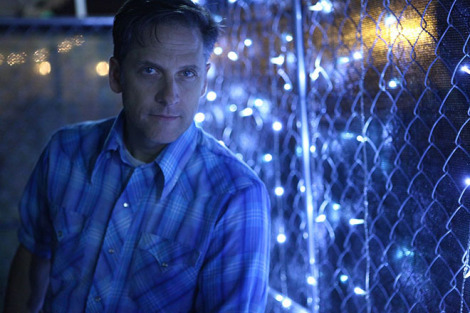
Joey Burns of Calexico
Calexico properly entered my consciousness with the release of their gorgeous, dark and startlingly cinematic 2008 record Carried to Dust. I’d heard of them, often mentioned in the same breath as Wilco, Jim James and Iron & Wine, so it was little surprise to me that their sound was firmly up my alley.
Those of you lucky enough to see their Sydney Opera House debut in September 2013, myself included, will already be aware of their on-stage prowess. If you haven’t seen them live, then I recommend grabbing a ticket to their performance at Sydney’s Spectrum Now festival next month. You won’t regret it.
I spoke with Calexico co-writer and co-founder Joey Burns from his Tuscon, Arizona, home. We discussed the band’s love affair with Australia, his influences, making new record Edge of the Sun, writing film soundtracks, Morricone and future touring plans.
You’re back in Australia this March and have been here a number of times. I read that your first visit to Oz was to support Nick Cave and the Bad Seeds – when was that?
Oh my gosh, when was that… somewhere around 2006, 2007 maybe? Maybe a bit earlier, it’s been a while. But I know we went over there with Neko Case and her band, we were all friends. We know Warren Ellis and The Dirty Three. The first tour that John Convertino, the drummer of Calexico, and I did as a two-piece in the States was in support of The Dirty Three. So it was a fitting reunion.
Was it difficult for Calexico to tour internationally in the beginning, given that you have so many members?
(chuckles) It still is tricky, yeah, and it still is worth it. It’s always worth it. We’re able to do things very stripped down. That’s what has made it very easy for us to do different projects outside and around Calexico. There’s this ability to shapeshift and to add maybe some backing to singer-songwriters from various backgrounds, as well as soundtrack work, so we’re very adaptable. And it’s also just really fun for us to try and different projects and do different things.
I have this ghost orchestra sitting on my shoulders, which is always in the background.
Last time Calexico visited Australia you played the Sydney Opera House. Were you aware of the venue’s pedigree before the show?
Are you kidding? I mean, for sure. All my family – everybody’s families – were all so proud of the musicians. And so were we. I love the fact that there is programming going on inside a classical venue that is outside the traditional role of what a classical venue can be. That’s very parallel to a lot of the themes and approach to our band. So, of course, I was very honoured. I loved the show and loved the crowd. And I loved getting to play some shows with Tiny Ruins, who was the New Zealand act that opened up. It’s a big honour to get to play the Opera House.
Maybe next time we go back to a place like that we can do it with a 70-piece symphony orchestra, which would be really nice. Because we have a bunch of songs that have been scored and we’ve recorded maybe a dozen or so songs with a session orchestra. For me it’s always exciting getting to hear some of those arrangements fleshed out with strings and woodwinds and brass and stuff. Some of those songs really lend themselves. And it’s part of that connection that I have personally to not only playing jazz growing up but also playing classical music. I think that’s what led me to having my ears opened up a bit. I love punk and garage rock and pop music, and I love hip hop. I love a lot of music. But growing up it was nice to have that exposure by way of my parents’ record collection, but more importantly growing up in Southern California and getting to play a lot of differnet kinds of styles of music. In jazz, especially, there was a lot more Latin influence that I responded to positively. Because the bass, being a bass player, is much more free and active and not just playing quarter notes. There’s a lot more division of rhythm, so that really opened me up. Especially right now, as far as where I am and looking at what the band has done and the direction that we’ve taken, is a little more outside your normal alternative Americana or indie rock. I love indie rock, and I love experimental music and lo-fi and stuff that we embrace, but I think it’s a combination of things.
That’s one of the reasons why we decided to call our band Calexico because we’re that kind of strange hybrid – a meeting of worlds that come together under the roof of the Calexico sound.
There’s no doubt the band has a sound unto itself. When you’re in the studio writing, which instruments tend to be the catalysts for a song?
For me, especially, I have this ghost orchestra sitting on my shoulders, which is always in the background. So if I’m laying down something with the drummer, John Convertino – and the majority of the songs written are dependent on the two of us in a room, making something up – and those basic tracks are really crucial to the sound and feel and mood. It’s got to have that vibe, it’s got to have some kind of vibe that we can build things on to. Or choose not to build arrangements and instruments on top of. So it kind of varies. It’s a treatment of songs and phrases with the approach of giving things, whether they be lyrics or melodies, space. That’s my approach, and I think it’s John’s too. John comes from a very jazz-orientated background as well. His favourite drummers are Elvin Jones, Max Roach, Buddy Rich. I think also getting the tour with Jim White (The Dirty Three), those two hit it off because they have very experimental approached to the drum set. That’s always really exciting to watch.
So because Calexico’s songs are being co-written by a drummer, the rhythm would be crucial to how the songs come together.
It is. A lot of times we come up with this mood or atmosphere first, and for sure there are chords. But there are rhythms and dynamics built into the song. So that gives a much more wide open range of possibilities than it just being: lyrics, verse, chorus, this is what it is.
For sure when we’re writing those elements and those foundations can be in place, but there can also be this element of chaos that is woven in. And that I really enjoy, and I think we need. We need it in our lives, we need it in our music. There’s always enough of the element of machines and programming and things being consistent. I think part of the nature of musicians and storytelling through song is that human element. That’s what we’re trying to capture.
You’re digging deeper because you’re not just doing it for yourself or your band members, you’re doing it for your family.
With your most recent album, Edge of the Sun, did you step into the recording studio in Mexico City with pre-existing ideas or were you writing the record from scratch?
For the most part we were going there to dig for gold. We were looking to find something new. We did bring some sketches of demos but they didn’t pan out. Then there was a lot of songs written and recorded after having been there, so that experience seeped into the psyche and into making songs. So it helped to give way to new things.
So you find atmosphere of a particular city can seep into your psyche and shape the music?
I think so, yeah. Sometimes it’s more obvious than others, and it’s not like we need to go somewhere to do this. But it definitely helps. And, especially in these days where a lot of the members of the band have families, so there’s a lot more work to do when you’re home. Like right now, my daughter, I told her I have to do an interview so I’ll be busy for a little while and try to be quiet. She’s already asked me a couple of questions while I’ve been talking to you. So it’s hard to juggle all those things at the same time. And at the same time it’s a beautiful thing, and it enriches your experience when you go then to play music, or write songs, or go into the studio or on tour. You’re digging deeper because you’re not just doing it for yourself or your band members, you’re doing it for your family. Then you go on tour and you notice that family is extended and it’s incredible. To have that experience and share something as special as music with other people, and you never know who will be at a show. Someone might be there and have that rare window to come up to a musician and say, “Hey, your music really helped me through a difficult time and thank you for that.” And that is the greatest gift, getting that kind of feedback in return.
From looking at the band’s output over the years, not just Calexcio’s studio records, but all the other projects in between, it seems that you’re hard workers. Do you get to take a break from “creating”?
Yeah, for sure. For me it seems like there’s a lot of breaks now. Part of that is that my wife works fulltime, so when I’m home I am devoted 100 per cent to the family. But I do enjoy having offers to play bass on someone’s recording, like I did two weeks ago, or get to help record and produce a record. There’s some kids from Amsterdam that are coming to Tuscon and I’m going to help them on their record. So I love those opportunities. I’m still a musician and I love to play. And it’s really fun when you get to show up at a show or a session and you don’t carry the responsibility of planning and organising everything. You can just be a musician. It’s a lot of fun. That’s why I think a lot of musicians love to collaborate on different projects, or to be multi-instrumentalists. I’ve seen that a lot more in the last 10 or so years. A lot of people are switching instruments, and certainly that’s been a constant theme in our band since the get-go.
I wanted to ask you about The Guard soundtrack that you composed for director John Michael McDonagh. Calexico would probably not be the most obvious choice for a film about police corruption in western Ireland. How did that opportunity come about?
Well, he was looking for contrast. He didn’t want to go down the expected path. He was giving us examples like [Sam] Peckinpah and The Wild Bunch. And he was saying, “Hey, some of these songs of yours have been inspirational in the writing and bringing together the ideas of this movie, and I would love it if you guys could be a part of it.” We met at a hotel, at Levin Heathrow, and he just laid it out like that and we said, “Sounds great.” And it was super easy to work with him, and I loved the script and, of course, in the end the editing and acting was just phenomenal. And everyone can relate too, because a town in the west of Ireland, in Galway, I mean, it could be anywhere right? We all can relate to a character like this. The unexpected, a surprising character. And all the nuances and layers that go into a small town cop. I thought it was just brilliant and I loved being a part of it. I loved seeing the footage and it was very easy to work with John. I’m really happy to get to do that. I’d like to work more with film, we have one documentary coming up that we’ll be working on in the middle of this year.
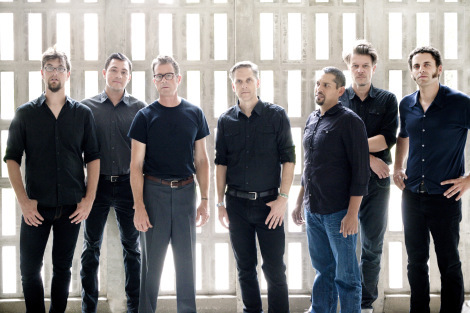
Calexico. Madrid. Julio, 2014
In the case of The Guard, were you seeing any rushes before you composed the score or were you working off the script?
I love the scripts because they give you the overview, but really it’s coming down to what you’re seeing on screen: the colour, the lighting, the movement – the editing, really is so crucial. That pace sets the tone. It’s kind of similar to working with a singer or songwriter, you’re just following the tone and the pulse of the director’s vision. So, for me, it’s very similar to working with other musicians, but more dimensional.
I believe McDonagh’s next movie is set in New Mexico, so perhaps he’ll go with some traditional Irish music on the soundtrack.
I wouldn’t be surprised. There’s so much [music] out there. And there’s a lot of cinema that deals with Westerns, or that kind of barren landscape. Look at the new film that Leonardo DiCaprio’s in, The Revenant, I just went and saw that. I liked the different sounding music, which at times gave something sympathetic to the heart of the main character, but also gave a connection to nature. Which, for me, is the hero in the film. I’m yet to see The Hateful Eight, but I’m sure it’s going to be a lot of beautiful lines and scenes.
And a Morricone score.
Oh, that’s right! Morricone did the score. See, now you’re just going back to the classics. And what’s great about listening to scores such as his, is that there’s a lot of playfulness and surprise. There were a lot of elements that were distilled when I first moved to Tuscon in the early ’90s. I found some common threads. Everything from gypsy music, from around the world not just Eastern Europe or the Iberian Peninsula, but finding it in South America or in Cuba, or here in my own backyard in Arizona. Finding these threads and then hearing it in some of the twang elements in Morricone’s score or in Link Ray’s early songs. For me, for whatever reason, there’s a lot of similarities here and I’m going to put together this orchestra, like I was saying before, this ghost orchestra, that is made up of different parts. It’s more like a film score orchestra, I guess you could call it. But I wanted to be able to tour and that’s not always an easy thing, to get seven musicians and all that gear on stage and on the road is not easy. Some shows do great and it’s a win-win situation. But other times you have to invest or you say this means a lot to me so I want to make it work, so you get creative in the process of making it work.
What’s next for Calexico after the Australian tour?
We have quite a few tours still lined up. Usuaully with a record it’s great to be able to tour for two years after that. So we’ll be returning to Europe a couple of times, which has always been a big staple for us. But we’ll be doing some festivals in North America, there’s about a week of shows in South America, which I’m really excited about. I’ve been hoping for a chance to play in Asia, so that’s kind of a dream. Then I’d love to return to Mexico and Mexico City. Then it’s time to think about the next record.
I think we’re going to try a couple of different things. If John and I have time – he lives not far away, he moved to El Paso, Texas, so he’s maybe five hours away by car. And so it’s going to be interesting to see how we can get together and carve out time to do that, but we’ll start working on some new songs. With touring there always comes new projects and new ideas.


January 16, 2016
10 upcoming movies you should be excited about
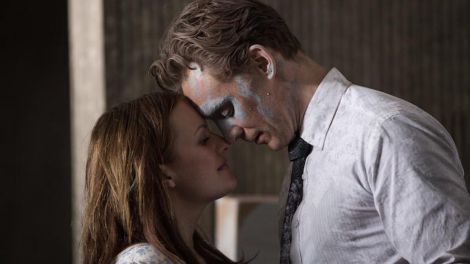
High-Rise
The past 12 months were not Hollywood’s best.
The divide between major blockbusters, with budgets in excess of $150 million, and thought-provoking and well-crafted indie films seemed even greater than before.
You had to look very hard for memorable movies in 2015.
Take, for example, science fiction drama The Martian’s inclusion in the “Best Comedy or Musical” category at the Golden Globe Awards.
The Ridley Scott flick actually won, despite being void of humour or song-and-dance numbers.
Clearly the Hollywood Foreign Press Association, which nominates and votes on the Globes, was scraping the bottom of the barrel.
Subsequently, the race for the Academy Awards this month could be one of the most bland in recent memory.
But never fear, cinephiles.
There are a number of promising movies to hit our big screens this year.
Here’s 10 flicks to get excited about.
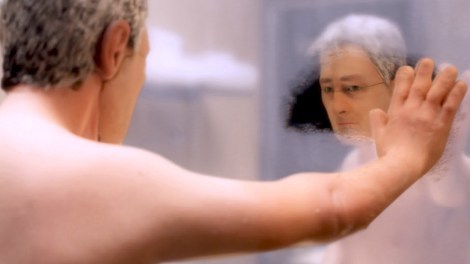 ANOMALISA
ANOMALISADirector: Charlie Kaufman and Duke Johnson
Anomalisa is a stop-motion animation but it is definitely not for children.
It’s the latest work from the vivid and wildly original mind of Charlie Kaufman, writer of Being John Malkovich, Adaptation and Eternal Sunshine of the Spotless Mind.
Anomalisa follows Michael Stone, an author and expert on customer service, as he spends a night in the Fergoli Hotel before speaking at a conference.
Stone has descended into an existential crisis, overcome with the mundanity of life to the point of mental breakdown.
But he meets Lisa, a woman staying at the hotel who is a fan of his, and feels an immediate love for her that could remedy his angst.
Anomalisa won the Grand Jury Prize at the Venice Film Festival and was nominated for a Golden Globe.
It is both a bleak and beautiful experience.
Release date: February 4, 2016
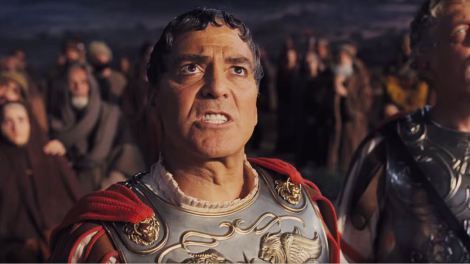 HAIL, CAESER!
HAIL, CAESER!Director: Joel and Ethan Coen
The movies of the Coen Brothers shift between twisted black comedy (Fargo, No Country for Old Men) and off-beat, playful slapstick (O Brother, Where Art Thou?, Intolerable Cruelty).
Hail, Caersar! appears a return to the latter, a comical crime caper set in the Hollywood film industry of the 1950s.
Eddie Mannix, played by Josh Brolin, is a “fixer” helping the production of a new prestige film in the vein of Ben Hur.
The film’s star, Baird Whitlock (George Clooney), is kidnapped by a group called The Future, who demand $100,000 for his safe return.
The cast is one of the Coen Brothers’ very best, with Ralph Fiennes, Jonah Hill, Scarlett Johansson, Channing Tatum, Frances McDormand and Tilda Swinton all joining in the mayhem.
Release date: February 18
 TRIPLE 9
TRIPLE 9Director: John Hillcoat
If there’s one thing you can be sure of before watching the latest John Hillcoat movie: there will be blood.
The talented Australian director has built a big fanbase with gritty movies such as The Proposition, The Road and Lawless.
Triple 9 is a thriller about a group of criminals and corrupt cops who want to pull off a near-impossible heist.
Part of the plan is to create a distraction by way of a “999”, which in cop code means “officer down”.
This will mean murdering an innocent policeman (Casey Affleck) on the other side of the city, drawing away all the good guys.
The all-star cast includes Kate Winslet, Anthony Mackie, Woody Harrelson, Chiwetel Ejiofor and Breaking Bad’s Aaron Paul.
Release date: March 3, 2016
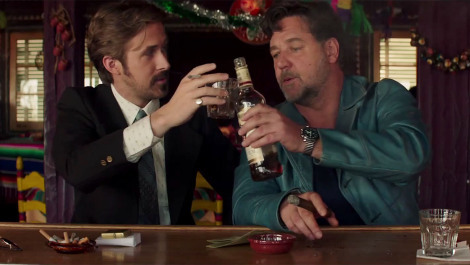 THE NICE GUYS
THE NICE GUYSDirector: Shane Black
If Hollywood wants an entertaining buddy action movie, Shane Black is the go-to man.
As a screenwriter his hits include Lethal Weapon, Lethal Weapon 2, The Long Kiss Goodnight and Last Action Hero.
Black stepped into big budget territory with the very entertaining Iron Man 3, but most impressive was his stylish 2005 neo-noir crime caper Kiss Kiss Bang Bang.
The Nice Guys pairs up Russell Crowe as a stand-over man and Ryan Gosling as a bumbling private eye, who join forces to investigate a girl’s disappearance.
Black’s sense of humour is just as his name suggests, so The Nice Guys shapes up to be a wild and mischievous ride.
Release date: April 6, 2016
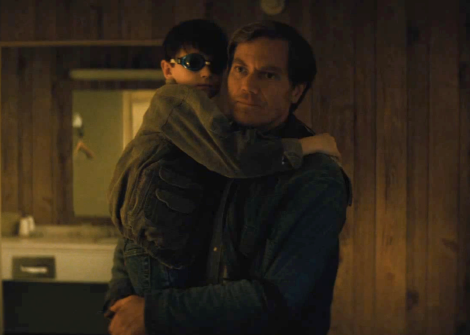 MIDNIGHT SPECIAL
MIDNIGHT SPECIALDirector: Jeff Nichols
American writer-director Jeff Nichols has been a quiet achiever in mainstream cinema, releasing the unpredictable sci-fi flick Take Shelter and coming-of-age thriller Mud.
His upcoming “sci-fi chase film” Midnight Special has an ’80s retro vibe and, as Nichols has stated, is inspired by movies like John Carpenter’s Starman.
Michael Shannon (star of Take Shelter) is on the run with his son, who has super powers.
He is pursued by a religious cult led by Sam Shepherd and a government task force headed up by Adam Driver.
The impressive cast also includes Joel Edgerton and Kirsten Dunst.
It has been selected to compete for the Golden Bear at the Berlin International Film Festival.
Release date: to be confirmed (second quarter 2016)
 HIGH-RISE
HIGH-RISEDirector: Ben Wheatley
Dystopian futures of enforced social structure have been standard fodder throughout science fiction, and the resulting tension and violence is explored in J.G. Ballard’s book High-Rise.
The classic 1975 novel has finally been brought to the screen by the formidable British husband and wife pairing of director Ben Wheatley and screenwriter Amy Jump.
With charismatic Tom Hiddleston in the lead role of Dr. Robert Laing, the film follows the exploits of the inhabitants of a luxury tower block that is isolated from the rest of society.
The mild oppression of those living on the lower levels begins to erode the harmony of this architect-designed microcosm, descending into orgiastic mayhem.
High-Rise looks to be a deliciously dark and brutal comedy.
Release date: second quarter 2016
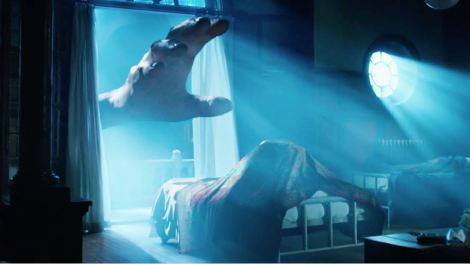 THE BFG
THE BFGDirector: Steven Spielberg
Roald Dahl fans could breathe a sigh of relief when it was announced that none other than master craftsman Steven Spielberg would bring a live action Big Friendly Giant to the silver screen.
The director has re-teamed with E.T. the Extra-Terrestrial screenwriter Melissa Mathison for this Disney production.
The key to its success will be finding a balance between the heart-warming friendship between The BFG and pint-sized heroine Sophie, and the horror of the child-eating giants.
Two of those monsters, The Bloodbottler and The Fleshlumpeater, are played by chameleons Bill Hader and Jemaine Clement respectively.
Older kids are sure to love it, though it might scare the tiny tots.
Release date: July 22, 2016
 WAR ON EVERYONE
WAR ON EVERYONEDirector: John Michael McDonagh
Irish writer-director John Michael McDonagh has not put a foot wrong in his cinematic career.
The brother of the equally talented filmmaker Martin McDonagh (In Bruges, Seven Psychopaths) wrote the screenplay for Heath Ledger’s Ned Kelly flick and, more recently, wrote and directed two immaculate black comedies in The Guard and Calvary.
War On Everyone follows Michael Pena and Alexander Skarsgard as corrupt cops in New Mexico who blatantly blackmail and frame any criminal that crosses their path.
Things take a sinister turn when they attempt to blackmail someone far more deadly than them.
Expect War on Everyone to be a bloody and twisted good time.
Release date: third quarter 2016
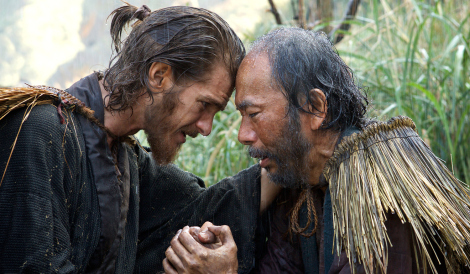 SILENCE
SILENCEDirector: Martin Scorsese
Director Martin Scorsese long had plans to direct an adaptation of Japanese and Roman Catholic author Shusaku Endo’s novel Silence, and production began in January 2015.
The movie follows two Portuguese Jesuit missionaries (Andrew Garfield and Adam Driver), who face violent persecution when they travel to Japan to seek out their mentor (Liam Neeson) and spread Christianity.
Scorsese remains a force in cinema and no matter what genre or era of history he turns his eye to, you can be sure it will be an experience – and in all likelihood a compelling one.
Release date: to be announced
STORY OF YOUR LIFE
Director: Denis Villeneuve
French Canadian filmmaker Denis Villeneuve has been superb since crossing over into English-language movies, with three impressive works, Prisoners, Enemy and Sicario, cementing his profile as a must-see director.
His next two projects are science fiction.
One is the sequel to Blade Runner, which will be released to monumental expectation.
But next we will see Story of Your Life, an adaptation of the award-winning Ted Chiang novella.
The story takes place after alien spacecrafts have landed on Earth.
A linguistic expert named Dr Louise Banks (Amy Adams) is employed by the Government to decipher the aliens’ language and determine if they are friend or foe.
With Villeneuve at the helm, you can expect a tense and intelligent piece of science fiction.
Release date: to be announced


January 9, 2016
The Revenant: film review
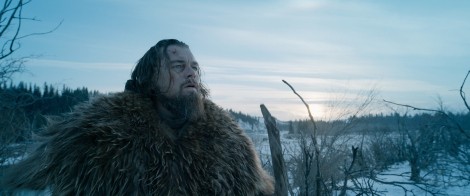
Leonardo DiCaprio in a scene from the film, “The Revenant.” The movie opened in Australian theaters on January 7, 2016.
THE REVENANT
Director: Alejandro G. Iñárritu
4/5
The comfort of a home cooked meal and a long hot shower is essential after enduring 156 minutes of The Revenant. Writer-director Alejandro G. Iñárritu’s follow-up to the Academy Award-winning Birdman is cinema at its most visceral and immersive, a bleak revenge tale and survivalist epic that weighs the emotional impact of blood, snow and dirt above dialogue and characterisation.
The premise is simple. It’s 1823 and Hugh Glass (Leonardo DiCaprio) is guide to a military sanctioned hunting party who are traipsing through the cold wilderness of the Louisiana Purchase to fill their quota of pelts. Minutes into the film the group are ambushed by the Arikara native tribe and in a stunningly realised sequence, in which you’re inclined to duck your head as arrows fly at the camera, a small number of hunters escape. The remainder are slaughtered. It’s a bloody and brilliant set piece.
But on this frontier the wrath of the slighted Native Americans is not the only threat. Soon after the party’s escape is The Revenant‘s oft-mentioned bear attack, which is every bit as intimate and painful you may have heard. In what appears to be a hybrid of CGI and puppetry, Glass is brutally mauled by a ferocious mother grizzly. Slashed and bloody, he is discovered on the brink of death and, after attempting to carry him on the stretcher, the hunting party makes the tough decision to leave Glass behind. His son, a half-Pawnee native called Hawk, refuses to leave his father’s side. Another of the party, John Fitzgerald (Tom Hardy) is offered money to stay and make sure Glass is allowed to shuffle off this mortal coil in peace and relative comfort.
But Fitzgerald grows impatient and decides to expediate the process. In a brief struggle, Hardy’s character kills Hawk and leaves Glass behind. This proves a mistake.
The Revenant is a stark, exceedingly masculine affair and will no doubt lose marks in the eyes of some critics for lacking substance or narrative breadth. The premise may be basic but this is still gripping material. The frontier, as it has so often in cinema, devolves its inhabitants to their most primal animal instincts. This tale could just have easily have taken place in a post-Apocalyptic future, and in many ways the barren landscape and story echo of John Hillcoat’s The Road adaptation. That film, and Cormac McCarthy’s novel, ultimately has greater resonance than The Revenant. Father and son remain together, and the stakes are higher for the parent. The urgency to continue and survive is immense.
Conversely in The Revenant, the viewer’s investment relies on hatred of Hardy’s devious villain. We are required to share Glass’ blind desire for justice if we are to endure moments in which he guts a dead horse to keep warm inside (insert Star Wars joke here) or cauterizes his slashed throat with gunpowder. The quest is exciting and often thrilling, and even though the tension never reaches nightmarish levels there is something hypnotic about the journey. Iñárritu prevents the film from sagging during its bloated running time. The landscape is alive and it breaths all around Glass as he drags himself ever onward. The wind whispers through the trees, captured by tranquil shots where the camera looks directly upward to the sky above.
DiCaprio – indeed all the cast – are completely invested here. You are left to wonder how close the Hollywood superstar came to either frostbite or hypothermia. One scene, in which Glass gags as he chows down on raw bison liver, was apparently not a planned reaction. So “method” performance has been somewhat redefined in The Revenant.
Though he says very little, you are left with a textured sense of Glass as a man. He is selfless, brave and loving. A survivor. DiCaprio conveys all this and certainly deserves to win the Academy Award for Best Actor. Hardy, too, brings layers to the backstabbing Fitzgerald as a man broken down by the brutality of life. And, despite what you may have heard, you can fully understand Hardy’s dialogue in spite of his mumbled Southern drawl. His “squirrel monologue” is one of The Revenant‘s best moments.
The Revenant doesn’t need to contain a profound message, particularly when it doesn’t pretend to have one. Iñárritu knows the escapist power of cinema. He has demonstrated his ability as a master craftsman and again revels in long seamlessly choreographed takes and artistically composed framing. This type of big-budget visual epic, one that plays to the strengths and scope of the medium, is becoming increasingly rare. The finesse on show here, indulgent as it is, can only be admired.
But if a bow must be drawn, and a thematic thread pulled from The Revenant‘s drawn-out carnage, it’s this: the core of our humanity is two-fold – survival and nurture. For Glass, his life lay with his son. For the grizzly bear, her cubs. For the Arikara Indian chief, his daughter. When what we protect is taken from us, the rage is almighty.


December 30, 2015
Top 20 movies of 2015

Birdman
While 2015 may be remembered as a year of blockbusters, with Avengers: Age of Ultron, Mad Max: Fury Road, Jurassic World and Stars Wars: The Force Awakens drawing millions of movie goers back through the turnstiles, many writer-directors showed that screen magic can be conjured with a far more modest budget.
This may also be remembered as the year Guatemalan American actor Oscar Isaac truly broke through into the mainstream consciousness as bankable leading actor, and it’s far from a coincidence that he appears in three of the year’s most memorable flicks (A Most Violent Year, Star Wars: The Force Awakens and Ex Machina).
Here’s a list of 2015’s 20 best movies.

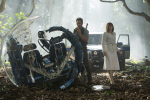


Director: Judd Apatow
Release: July 30, 2015
Trainwreck is a showcase for the talents of its lead actress and screenwriter Amy Schumer, drawing heavily on the comedians own life to fuse low-brow wit with moment of truth and poignancy. It really is a star-making turn for Schumer, who demonstrates a dramatic range wider than most of her peers. The extended, conversational stretches of dialogue make Trainwreck feel innately Apatow-esque, but Schumer’s wry, ribald remarks ultimately make this his funniest cinematic release.
For the most part, about the first ninety per cent of the running time, the movie avoids cliche and sentimentality and succeeds in finding a balance when romance blossoms. The casting of Bill Hader as the movie’s romantic lead is a stroke of genius, as is the scene-stealing inclusion of a very impressive NBA superstar LeBron James.
" data-medium-file="https://meadowlakestreetdotcom.files.wordpress.com/2015/11/ttrainwreck.jpg?w=300" data-large-file="https://meadowlakestreetdotcom.files.wordpress.com/2015/11/ttrainwreck.jpg?w=470" />



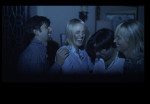










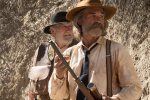

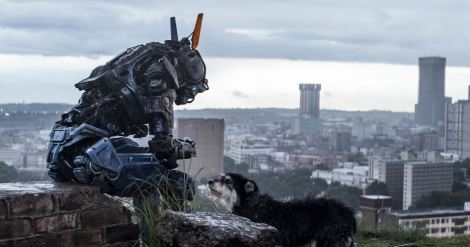
Chappie
20. CHAPPIE
Director: Neill Blomkamp
Release date: March 12, 2015
Chappie suffers from the same narrative and dialogue shortcomings of its predecessor, Blomkamp’s Elysium, but what it lacks in thematic subtlety it makes up for with seamless special effects and an adorable title character.
There’s a lot to like about Blomkamp’s third feature-length effort and science fiction fans should continue to hold out hope that the director will surpass the promise of incredible debut District 9.
Setting stories in his South African homeland gives the writer-director’s movies a gritty, post-Apocalyptic milieu – and his penchant for high-concept ideas is commendable. But, even despite its flaws, Chappie is a cut above the American action movies released in 2015.
Director: Colin Trevorrow
Release date: June 11, 2015
After the horrific third installment, Jurassic Park franchise fans could be forgiven for thinking Jurassic World might equally disappoint. But the largest grossing film of 2015 does not disappoint, with its four writers ticking all the boxes: dinosaurs, dinosaurs, dinosaurs. And they don’t mess with the formula: greedy humans messing with mother nature equals disaster. It’s not hard to understand and rings true 22 years after the original movie. Trevorrow locates the most magical elements of Jurassic Park and delivers a climax that will have kids and their parents cheering alike.
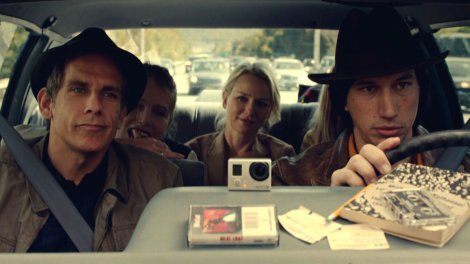
While We’re Young
18. WHILE WE’RE YOUNG
Director: Noah Baumbach
Release date: April 16, 2015
For those of us in the midst of the existential, murky mist of self-loathing that comes with the inevitable transference of youth into adulthood, Noah Baumbach’s While We’re Young will appear wrought of home-truths. The script’s immense poignancy is channelled through Ben Stiller’s protagonist Josh Schrebnick who, with wife Cornelia (Naomi Watts) is easily seduced by a charming hipster couple played by Amanda Seyfried and a superb Adam Driver. Devastatingly relatable, While We’re Young perfectly captures that moment in our lives when we realise we will always be defined by our age.
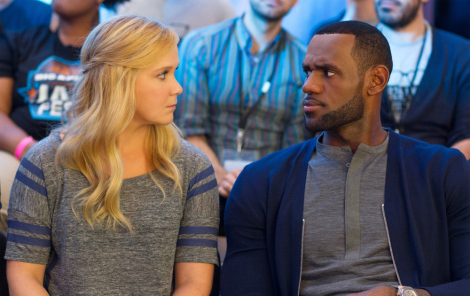
Trainwreck
17. TRAINWRECK
Director: Judd Apatow
Release: July 30, 2015
Trainwreck is a showcase for the talents of its lead actress and screenwriter Amy Schumer, drawing heavily on the comedian’s own life to fuse low-brow wit with moment of truth and poignancy. It really is a star-making turn for Schumer, who demonstrates a dramatic range wider than most of her peers. The extended, conversational stretches of dialogue make Trainwreck feel innately Apatow-esque, but Schumer’s wry, ribald remarks ultimately make this his funniest cinematic release.
For the most part, about the first ninety per cent of the running time, the movie avoids cliche and sentimentality and succeeds in finding a balance when romance blossoms. The casting of Bill Hader as the movie’s romantic lead is a stroke of genius, as is the scene-stealing inclusion of a very impressive NBA superstar LeBron James.
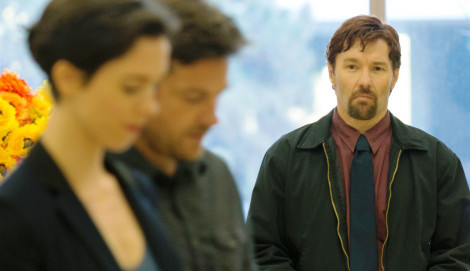
The Gift
16. THE GIFT
Director: Joel Edgerton
Release date: August 27, 2015
Joel Edgerton announced himself as an auteur this year, writing, directing, producing and starring in the delightfully Hitchcockian thriller, The Gift.
Despite the film’s trailer giving away one of the film’s key plot twists, Edgerton does an impressive job of subverting his audience’s expectations. The script never quite goes where you expect it to, mirroring the craftiness of Edgerton’s mysterious character, Gordo.
The casting of Jason Bateman in the leading role, who is at his best when playing against the dry straight-guy charm of his Arrested Development hero Michael Bluth, is spot on. Bateman gives one of his best performances, as does Rebecca Hall as his ever-trusting wife. The latter provides the movie’s emotional core.
Edgerton has impressed as a screenwriter with previous efforts The Square and The Rover, but has an exciting future as a director.
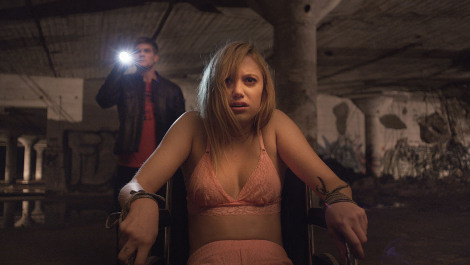
It Follows
15. IT FOLLOWS
Director: David Robert Mitchell
Release date: April 16, 2015
Critical acclaim has circled the lo-fi indie creeper It Follows since its release and the praise is deserved. The dream-like, Halcyon camera work and soft colours employed by writer-director David Robert Mitchell serve to exaggerate the ever-approaching doom that lurks throughout each frame, permeating every slow pan and jarring note of the trippy ’80s-inspired synth soundtrack.
Mitchell subverts many horror tropes and expertly avoids giving logical motivation to the demonic presence that slowly stalks our beautiful doe-eyed heroine. This enhances the fear. But what elevates It Follows above most of the year’s horror efforts is that it captures the sensation of being trapped in a nightmare, complete with blurred dream logic. Yes, on some occasions the logic might seem contradictory, but the dreamscape reality becomes a suitable playground for Mitchell to bend and break his own rules.
While much has been made of the metaphorical aspects of It Follow‘s central idea, with pundits suggesting everything from venereal disease to the realities of mortality, it’s a film best absorbed rather than deciphered.

14. Knock Knock
14. KNOCK KNOCK
Director: Eli Roth
Release date: October 9, 2015
The most widely misread film of 2015 was Eli Roth’s delicious black comedy Knock Knock.
Keanu Reeves plays Evan Webber, an architect and family man, whose two kids and wife leave him alone for a weekend. A storm brews outside his large modern Los Angeles home while he sits inside, smokes a little pot and works on a building project. His doorbell heralds the arrival of two young, big-eyed beauties, who are wringing wet and lost on their way to a party.
With all the chivalry he can muster, Webber invites them in, offers them a robe and calls them an uber. A dialogue-driven dance begins in which the two girls use every trick in the book to seduce their host.
It’s likely male and female viewers will each have separate responses to Knock Knock. To heterosexual males it’s a conundrum (“Would I have given in? Would I have fallen for the trap?”). Women might want to believe their partners would have survived with their fidelity intact (“Do you really believe that?”). Other viewers may have a problem with the depiction of the two malevolent female antagonists (“Are they meant to represent all young millennial females?”).
Stepping away from the “torture porn” that Roth is largely credited for kickstarting with his Hostel franchise, the director is at his most precocious in Knock Knock. You can practically hear him cackling behind the camera. But, keep in mind, these two women are fictional creations, each an exaggerated device designed to personify the consequences of infidelity. Furthermore, they represent the public trials of the internet era, where judgements are handed down through the court of social media.
As the destruction of Webber’s world unfolds, and the constructed veneer that society has placed on him is broken down, Roth’s wicked message presents itself: in the digital age, the nuances of a crime bear no relevance.

13. The Overnight
13. THE OVERNIGHT
Director: Patrick Brice
Release date: August 1, 2015 (Melbourne International Film Festival)
The year’s sexiest comedy is also one of the funniest. Conservative couple Alex (Adam Scott) and Emily (Taylor Schilling) have just moved to Los Angeles. At a local park their son befriends a boy. Soon Alex and Emily meet the boy’s father, outgoing yuppie Kurt (Jason Schwartzman). The overly friendly Kurt invites them to have dinner at his home. Keen to meet new people and break out of their mundane cycle, Alex and Emily accept. At dinner they meet Kurt’s French partner Charlotte (Judith Godrèche). When the children get sleepy, Kurt suggests they are put to bed upstairs so the parents can continue the evening’s festivities.
From here The Overnight unwinds into an unpredictable and laugh-out-loud funny exploration of adult relationships and sexuality. The two couples smoke pot and drink booze, and slowly Alex and Emily’s inhibitions erode. The dialogue is sharp and playful, and Schwartzman is completely in his element. He’s never been better.
Oh, and the climax is unforgettable.
Director: Paolo Sorrentino
Release date: December 26, 2015
“Two old blokes lounge around a decadent Swiss hotel, lament their prostates, reflect on their younger years and stare at some tits…” doesn’t sound like much of an elevator pitch. But when the two old blokes are Michael Caine and Harvey Keitel, the proposition suddenly becomes far more appealing.
There’s no narrative thrust to the ironically titled Youth. Paolo Sorrentino’s second English language film after This Must Be the Place, ambles along at an octogenarian’s pace as retired composer and conductor Fred Ballinger (Caine) and film director Mick Boyle (Keitel) vacation at a stunning hotel in the Swiss Alps. Ballinger is retired and vehemently refusing to step back on stage for a performance for the Queen of England. Boyle is determined to finish one final movie, a project that will be his “testament”. The pair stroll through the country side and recall memories, ruminating on the past and accepting their brief future.
There’s a sumptuous and cinematic quality to Youth, the filmic equivalent of caviar and Veuve Clicquot. The hotel provides a constantly arresting back drop, as other characters are immersed in the idyllic locale: Rachel Weisz as Ballinger’s daughter and personal assistant, and Paul Dano as a weary young movie star (that’s possibly meant to be based on Shia LeBeouf). There’s even an appearance by an overweight version of Diego Maradona.
What makes Youth rise above its basic premise is the humour – Caine and Keitel are both very funny. And the Fellini-esque beauty of the whole affair gives it a sensuous sheen that proves a delightful indulgence.
Director: Morten Tyldum
Release date: January 1, 2015
The triumph and tragedy that marked the life of British cryptanalyst Alan Turing is explored in The Imitation Game, the winner of this year’s Academy Award for Best Adapted Screenplay. The movie’s double-edged title refers not only to Turing’s top-secret work for the British government in deciphering German intelligence codes in WWII, but also the need to hide his homosexuality during a period in which it was illegal.
With a stunning central performance from Benedict Cumberbatch as Turing, and strong support from Keira Knightley, Charles Dance, Mark Strong, and Matthew Goode, The Imitation Game takes small liberties with the truth, but otherwise sheds light on a man ultimately destroyed by a system he dutifully served. Turing’s work during WWII is believed to have shortened the war by as much as two years.
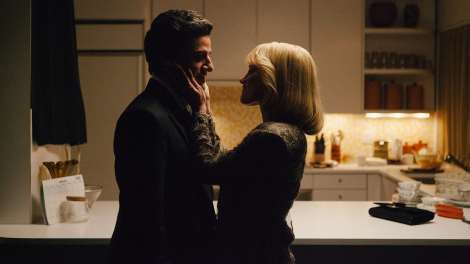
A Most Violent Year
10. A MOST VIOLENT YEAR
Director: J.C. Chandor
Release date: February 26, 2015
You could be forgiven for thinking A Most Violent Year is a crime drama full of bloodshed, but writer-director J.C. Chandor’s impressive third feature relies more on intricate characterisation and thematic subtlety than it does shoot-outs.
The constant threat of violence pervades this tense thriller set in the tumultuous New York City of 1981, a decaying society in which honest self-made businessman Abel Morales (Oscar Isaac) is attempting to grow his heating oil company.
But being a man of morals in a corrupt world proves decidedly difficult for Morales, as he finds himself confronted on a series of fronts, most notably the District Attorney’s office and gun-toting oil thieves.
J.C. Chandor has crafted a memorable and atmospheric tale that inverts the bloody rise of Tony Montana in Brian de Palma’s Scarface, presenting a tenacious immigrant protagonist that wants to reach the top as a law-abiding citizen.

Ex Machina
09. EX MACHINA
Director: Alex Garland
Release date: May 7, 2015
From the moment lowly computer programmer Caleb (Domhnall Gleeson) arrives at the remote and sterile mansion of his company’s prodigal CEO Nathan, there is a sense of simmering unease in Ex Machina.
The source of the tension is difficult for the viewer to put their finger on and this is one of first-time director Alex Garland’s major achievements with this impressive piece of science fiction. Caleb is asked by Nathan to apply the Turing test (yes, the same Turing from The Imitation Game) to AI android Ava, a method of determining whether her behaviour can be objectively differentiated from a human. Ava is physically beautiful, custom-built by Nathan to be beguiling.
Ex Machina has been crafted with a deft hand by The Beach novelist Garland. He has a track record for intelligent science fiction, having written the screenplays for Danny Boyle’s 28 Days Later and Sunshine. Here he proves himself worthy of the director’s chair, using tense pacing and a magician’s sleight of hand to keep the audience guessing until the chilling finale.
Married in a double feature with Spike Jonze’s Her, Ex Machina proves a dark counter weight as an exploration of the perils of our inevitable future with artificial intelligence.
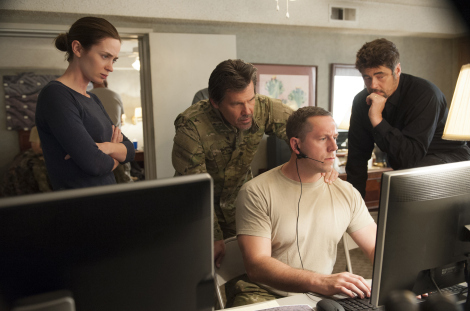
Sicario
08. SICARIO
Director: Denis Villeneuve
Release date: September 24, 2015
“This is a land of wolves now… and you’re not a wolf,” warns Benicio del Toro’s menacing anti-hero to Emily Blunt’s heroine. He’s not joking. There are wolves aplenty in the morally murky and violent world of French-Canadian director Denis Villeneuve’s Mexican drug cartel thriller Sicario. This often intense and bloody film poses the question “does the end justify the means?” as a naive FBI agent puts her soul on the line to join a group of mysterious government-sanctioned renegades who aim to bring down a Kingpin – by any means necessary.
Villeneuve has announced himself as a must-watch director in Hollywood since crossing into English language movies with 2013’s impressive Prisoners and the atmospheric and abstract Enemy. Sicario further demonstrates his ability to build palpable tension and extract riveting performances from his cast.
Villeneuve’s actors are the focus and his presence as director is subtle, allowing tension in the script to build on its own terms. Vital though are the stark, post-Apocalyptic aerial shots of the US-Mexican border – a barren reminder of the bleak terrain on which the blood of the drug wars is shed.
 07. GOING CLEAR: SCIENTOLOGY AND THE PRISON OF BELIEF
07. GOING CLEAR: SCIENTOLOGY AND THE PRISON OF BELIEF
Director: Alex Gibney
Release date: June 18, 2015
Alex Gibney’s revealing documentary about the cult of scientology draws largely on the book Going Clear by Lawrence Wright, and through anecdotal accounts confirms what most of us already might have already assumed: that Scientologists are bat-shit crazy.
While the accounts of former high-ranking Scientologists are revealing, particularly fascinating is the doco’s account of the religion’s history. L. Ron Hubbard, an extremely prolific science fiction author, was mentally unbalanced but managed to start a successful cult through his invention of Dianetics.
Full of mystery and intrigue, Going Clear makes for fascinating, if not very unsettling, viewing.
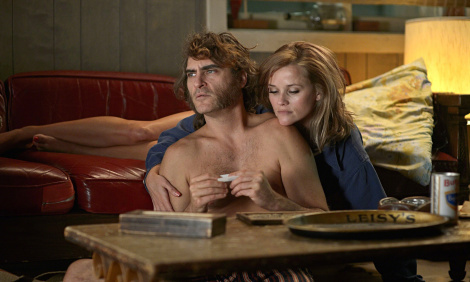
06. Inherent Vice
06. INHERENT VICE
Director: Paul Thomas Anderson
Release date: March 12, 2015
No directors ever dared adapt one of Thomas Pynchon’s typically complex novels, but Paul Thomas Anderson is no ordinary filmmaker.
Taking on one of the writer’s comparatively lighthearted works, and reuniting with Joaquin Phoenix, the star of his extraordinary The Master, Anderson weaves together a wildly enjoyable and pulpy romp.
Phoenix delivers one of his finest comic performances as stoner private detective Larry “Doc” Sportello, who stumbles with bleary-eyes through a very complex web of drug smuggling and police corruption.
The details of the plot, set in 1970s Los Angeles, might take more than one viewing to completely string together, but the joy of the ride is what makes Inherent Vice one of the year’s best movies.
Martin Short and Owen Wilson steal the show despite their relatively short screen time.
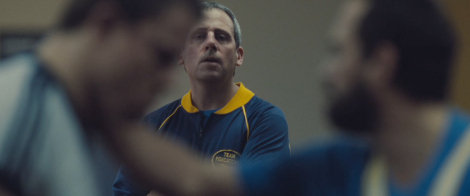
Foxcatcher
05. FOXCATCHER
Director: Bennett Miller
Release date: January 29, 2015
Knowing the grim outcome of the true story behind Foxcatcher casts Bennett Miller’s tense and chilling drama in an atmosphere of dread. This tragic story of obsession is hard to watch but impossible to turn off.
Screenwriters E. Max Frye and Dan Futterman have a lot of juicy material to work with in this unsettling retelling of the chain of events that led to the slaying of Olympic gold-medal winning American wrestler Dave Schultz.
A multimillionaire forever in his mother’s shadow. An ambitious wrestler forever in his brother’s. Rich in subtext and subtlety, Miller locates the most fascinating aspects of this Shakespearian real-life melodrama. And its three central actors give their finest performances.

Star Wars: The Force Awakens
04. STAR WARS: THE FORCE AWAKENS
Director: J.J. Abrams
Release date: December 18, 2015
It feels like a long time since a major motion picture event was able to live-up to the weight of crippling expectation. After George Lucas’ much maligned prequel trilogy of films released over a decade ago, the millions of Star Wars fans around the globe could be forgiven for venturing to see The Force Awakens with trepidation, like returning to the arms of an old flame that broke their heart.
While the heroes of the Star Wars movies battled to bring balance to the Force, it was director J.J. Abrams that managed to triumphantly return balance to the franchise, crafting a dark and dramatic new movie that pays homage to previous instalments while evoking a magic that gave fans hope of a bright future.
With stunning set pieces, charismatic new protagonists and a set of unhinged villains, Star Wars: The Force Awakens is a return to classic film-making and is a quality movie that stands alone as a modern science fiction classic.

Mad Max: Fury Road
03. MAD MAX: FURY ROAD
Director: George Miller
Release date: May 14, 2015
After what seemed like eternal damnation in the fiery depths of “development hell”, it looked like a fourth Mad Max movie would remain nothing more than a pipe dream for visionary auteur George Miller. But such was the production team’s determination, which had to see the shoot successfully relocate from Broken Hill to Namibia due to heavy rains, they were to overcome endless hurdles to deliver one of the most visually spectacular pieces of escapism in recent memory.
While you can argue Fury Road is light on plot, even compared to the original trilogy, its dazzling artistry lies in different areas. Miller revels in jaw-dropping carnage as post-Apocalyptic wrecking machines and their inhabitants somersault across an arid landscape. Within the destruction Miller locates a visceral beauty and, when mixed with the white-knuckled intensity of the stunning set pieces, creates a marvellous piece of escapism. The strong cast supplies the required pathos, forming a group of characters we care about, and Tom Hardy demonstrates that he can be a brooding, powerful lead while barely uttering a word.
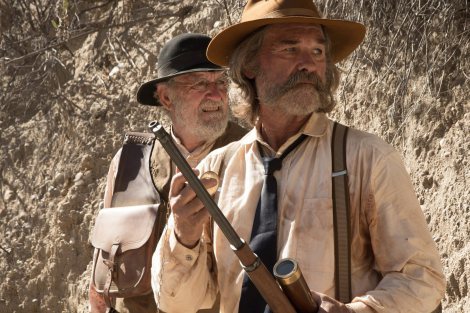
Bone Tomahawk
02. BONE TOMAHAWK
Director: S. Craig Zahler
Release date: No Australian cinematic release
One of the best American films of the decade, Bone Tomahawk will sadly not receive the accolades it deserves. But this beautiful and traumatic film is a harrowing experience unlike any other in recent memory. Such is the depth of its characters and the poetic nature of its dialogue, it’s no surprise that its script and direction is the work of a novelist, S. Craig Zahler. It’s the year’s best directorial debut.
When members of the small 1890s community of Bright Hope are kidnapped in the night by a band of savage cannibal tribesman, four men – Sheriff Franklin Hunt (Kurt Russell), Arthur O’Dwyer (Patrick Wilson), Chicory (Richard Jenkins) and John Brooder (Matthew Fox), venture into the unforgiving frontier to rescue them. They do this knowing they face almost certain death.
From the moment the four men’s journey begins, death stalks every frame. Dread builds as each day brings them closer to the valley where the cannibals reside. Their quest is punctuated by countless memorable and humanistic moments, acts of violence and philosophical discussion. They are men of varying morals, each navigating in their own way a mission into the depths of darkness and depravity.
Bone Tomahawk seems destined for cult status, but ultimately deserves so much more. For cinephiles brave enough to watch it, the rewards are numerous. Though be warned: the film’s terrifying final act features one of the most graphic and troubling death scenes in cinematic history.

01. Birdman
01. BIRDMAN OR (THE UNEXPECTED VIRTUE OF IGNORANCE)
Director: Alejandro G. Iñárritu
Release date: January 15, 2015
The deserving winner of this year’s Academy Awards for Best Picture, Best Director, Best Original Screenplay and Best Cinematography, Birdman is wondrous on many fronts. Alejandro G. Iñárritu’s masterpiece depicts a movie star in search of creative validation, trying to escape the spectre of the superhero with which he has become synonymous by staging an artsy adaptation of a Raymond Carver short story on Broadway. There is an obvious in-joke in the casting of Michael Keaton in the lead role, himself famous as Tim Burton’s version of Batman, and the viewer is swiftly reminded of his impeccable comedic timing.
Around Birdman‘s emotional core are layers and devices that combine to make this a perfect piece of cinema. Iñárritu weaves pure movie magic to give the film its own abstract inner logic, a hyper reality that never confuses but mesmerises and uplifts the audience. Long, flowing takes are seamlessly strung together, the camera floating and bending time with masterful flair. The percussive soundtrack and sharp screenplay increase the film’s hypnotic and kinetic energy.


December 26, 2015
Top 25 records of 2015
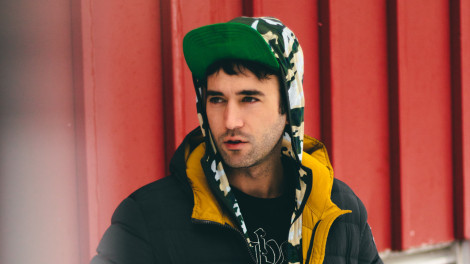
Sufjan Stevens released the best record of 2015.
Man, oh man. Picking a “best of” list of music in 2015 has been a tough assignment. The past 12 months have been the most fruitful in recent memory, particularly for sterling returns from legendary acts. Take, for example, Faith No More’s monstrous reappearance or the anticipated comeback from indie heroes Built to Spill. And it was a year of ambitious output from a host of esteemed artists across varied genres, from Kamasi Washington’s three-hour jazz opus, to the stripped-back rumination of Sufjan Stevens – two sonic polar opposites of arguable genius and emotional grandeur.
I usually only pick 20 albums each year, but that proved impossible in 2015. So here is a top 25, one that I could no doubt deliberate over for most of 2016. Please note that I omitted covers records. If I hadn’t employed this self-imposed criteria, then Ryan Adams’ 1989 and Hollywood Vampires’ raucous self-titled release would have made the cut.
Marlon Williams
The Kiwi with the golden tonsils, Marlon Williams, broke through into Australia’s collective consciousness, fuelled by word-of-mouth, stunning live shows and his impressive debut record. The self-titled collection, a mix of originals and reimagined gems, has a haunted atmosphere, arrangements rising and falling with echoed ghostly backing vocals ebbing and flowing throughout. Williams keeps alive the spirit of early Americana and country masters, straddling gospel and bluegrass, weaving the magic together with his stunning, glassy voice. From the galloping ‘Hello Miss Lonesome’ to the Edgar Allan Poe-inspired spooky lullaby ‘Strange Things’, Williams provides evidence of his burgeoning talents as a songwriter. But the real scene-stealer is the wrenching recreation of Teddy Randazzo’s ‘Lost Without You’, with its swelling strings and Williams’ soaring voice in full flight.
The Pale Emperor
Manson’s decision to co-write his ninth studio record with film composer Tyler Bates (Guardians of the Galaxy) reaped giant dividends. The result is a suitably bombastic rock record that relies more on genuine hooks than twisted industrial growling. And while it might be Manson’s face on the cover, all the music on The Pale Emperor is the work of Bates. The lyrics, however, are unmistakably Manson’s. The collaboration is a reinvigorating one for fans, one that’s consistently robust and sexy. One of the year’s best tracks, ‘Deep Six’, is undoubtedly Manson’s most glorious offering since ‘The Beautiful People’.
The Waterfall
After dividing opinion with their playful space-funk rock experimentation on 2008’s Evil Urges – an eccentric direction that bled into 2011’s Circuital – My Morning Jacket returned to sunny, pastoral rock jams with The Waterfall. It’s a return to the 2003 It Still Moves era, full of lush melodic folk (‘The River’ and ‘Get the Point’) and big prog-rock freak-outs (‘Tropics [Erase Traces]’ and ‘In its Infancy [The Waterfall]’). There’s a buoyant radiance to The Waterfall, with the group indulging in big pop hooks (‘Compound Fracture’), echoed harmonies, buzzing keyboards and Jim Jones’ stinging falsetto. For all their fun sojourns to the distant corners of the rock universe, it seems My Morning Jacket are mostly at home in the montane wilderness, amongst pine trees and flowing, crystal waters – for now.
B’lieve I’m Goin Down
Ever the alt-country slacker rock star, Kurt Vile’s aloof charisma gives the impression of someone making zero effort. But the quality of his songwriting belies this laconic charm. On his sixth studio record, the Pennsylvanian lo-fi hero manages to evoke the mood of masters like Leonard Cohen [‘That’s Life, Tho (Almost Hate to Say)’] and Lou Reed (‘Lost My Head There’) in a collection of exemplary Americana. On B’lieve I’m Goin Down, Vile tones down the electric fuzz of 2013’s Wakin on a Pretty Daze in favour of a cleaner, classic sound. Opening with one of the year’s best tracks, ‘Pretty Pimpin’, in which Vile has an existential crisis one morning in front of his bathroom mirror, the record is also a showcase for some wry, ambling and often arresting lyricism. In the aforementioned ‘That’s Life Tho’, the long-haired songsmith shifts from a nonchalant stoner opening verse (“When I go out, I take pills to take the edge off, or to just take a chillax, man and forget about it, just a certified badass out for a night on the town…”) into powerful fatalism ( “The laws of physics have shown that a man must walk through life via peaks and valleys, it was a man, a big-old-hearted man that we all put on a pedestal and when he left this earth, but he left so many loved ones behind…”). It proves a potent mix.
But For All These Shrinking Hearts
With five studio records in eight years, plus brief outings with the Basement Birds supergroup and Beatles tribute nights, Josh Pyke has remained a steady force on the music scene. And his evolution has been just as organic as any of his folk contemporaries around the world, with each release building on his previous collections, adding or subtracting to the layers of sound but always searching through rich, hard-to-resist melodies. Pyke has seemingly always known how to write a hook that gets under your skin – and he’s always been aware of the restless power of a good maritime metaphor – but Shrinking Hearts is his most consistent and sublime collection. From its Wilco-esque opener ‘Book of Revelations’ to the stunning celebration of a long-term relationship in ‘Still Some Big Deal’, this latest statement suggests a songwriter with a wet sail. The horizon will prove no boundary.
Beauty Behind the Madness
Michael Jackson never sang lyrics like, “And some dope dimes on some coke lines, gimme head all night, cum four times, baby girl just wanna smoke a pound, do an ounce, get some dick, tell her friends about it….” but you can’t help but hear the ghost of The King of Pop in the angelic voice of Abel Tesfaye. Beauty Behind the Madness is a far broader production than the raw sexuality of his breakthrough Trilogy mixtapes, but the sensuous drug-fucked hedonism that makes his music so irresistible remains at the fore. And The Weeknd’s sweet voice continues to subvert his graphic tales of all-night parties and sexual conquests. Creatively, Tesfaye surrounded himself with an array of writers and producers. Kanye West had input on ‘Tell Your Friends’ and on ‘Can’t Feel My Face’ it was super-hit writer Max Martin, the man responsible for The Backstreet Boys’ ‘I Want it That Way’, Britney Spears’ ‘…Baby One More Time’ and Bon Jovi’s ‘It’s My Life’. But, in 2015, The Weeknd left every other mainstream pop singer for dead.
Anyway
Oregon’s loss was certainly Melbourne’s gain when Dandy Warhols drummer Brent DeBoer moved to Australia to marry a local gal and form Immigrant Union with musicians gleaned from the local scene. Essentially a songwriting partnership with Bob Harrow – they both pen the tunes and share vocal duties – this project is a warm and fuzzy celebration of alt-country and psychedelia. You can detect the Dandy’s DNA in the meandering and lysergic title track, and also in the stand-out dream-pop single ‘I Can’t Return’, but Harrow’s presence on ‘Alison’ and ‘Wake up and Cry’ adds further colours to Immigrant Union’s sonic palette. While there may be echoes of other power pop groups on Anyway, from Teenage Fanclub right back to The Byrds, there’s an unmistakably classic feel to this lush second record.
Sol Invictus
A band that has gleefully thumbed their noses at categorisation since their envelope-pushing 1992 record, Angel Dust, Faith No More returned in 2015 with their first record in 18 years. And what a mighty comeback it was. The genre-bending group picked up where they left off, managing to still sound ahead of their time. Are they avant-garde rock? Experimental metal? Your guess is as good as mine. Piano interludes throughout create a sense of heavy melodrama, the tension heightened by singer Mike Patton’s menacing vocal acrobatics. Masters of dynamics, the tracks on Sol Invictus include more hairpin turns than a rally race track.
Strangers to Ourselves
Some critics derided Modest Mouse’s sixth studio record – their first in eight long years – for lacking cohesion and an obvious evolution beyond from what came before it. That’s debatable. What is absolutely certain, however, is that Modest Mouse remain one of the most fiercely original rock bands on the planet. Another fact: the album features one of their best-ever tracks, ‘The Ground Walks, With Time In a Box’. The instantly recognisable eccentricities of singer and songwriter Isaac Brock bring with them playful energy, surprise hooks and irresistible shifts in tempo. The group are a melting pot of influences and genres that’s difficult to squeeze into an elevator pitch, with original drummer Jeremiah Green’s rhythmic palette as essential and character-building as Brock’s Montana drawl. The whole concoction sounds wonderfully unhinged, a treasure trove of odd ideas and peculiar lyrics that provides echoes of Talking Heads, The Beta Band and Ween. Let’s hope it’s not another eight years before record number seven.
Untethered Moon
Indie-rock legends Built to Spill made a triumphant return with their first record since 2009’s There is No Enemy. There’s no reinvention on their eighth effort, Untethered Moon, but certainly a revived energy and directness. This could be due to the addition of new drummer Steve Gere and bassist Jason Albertini, included as part of mastermind Doug Bartsch’s long-held desire to record each album with a different line-up. Martsch’s soft, chiming voice and scintillating guitar work on tracks like ‘C.R.E.B.’ echoes of a young Neil Young – it’s both sweet and abrasive. But key is Martsch’s angry and melodic axe interplay with original member Brett Netson, which builds to an unholy climax on the monstrous eight-minute closer ‘When I’m Blind’. Guitar muscle over bare rhythmic bones. This is what Built to Spill fans love. This is why we’ve waited six long years.
High Country
Texas rockers The Sword shifted away from their Sabbath-esque brand of heavy metal on fifth offering, High Country, opting for a Southern-fried brand of hard rock. The result is a beefy ode to other ’70s greats, from Thin Lizzy to ZZ Top and Wishbone Ash. There’s big helpings of boogie and blues through this mighty album, every song presenting classic riffs and lyrics pulled straight from the annals of metal’s ancient sorcery and magic; hunted men run through unforgiving landscapes. There may be some Sabbath left in the breakdowns and arrangements of tracks like ‘Empty Temples’ and ‘Tears Like Diamonds’, but when homage is paid this magnificently – and with so much thundering psychedelic grandeur – you can’t help but be swept away by the barrage of grooves (see the title track) and balls-to-the-wall energy (see the instrumental ‘Suffer No Fools’). This is music to get stoned to. Throw on High Country, crank it to eleven, pull The Sword from their sheath and lift high the goblet of rock. May it forever overfloweth.
Return to the Moon
For the small number of us that have struggled to embrace the dour earnestness of The National, a band weighed and restrained by their unwavering seriousness, the playfulness of vocalist Matt Berninger’s EL VY project will be embraced with open arms. A collaboration with former Menomena member and current Ramona Falls frontman Brent Knopf, Return to the Moon is as experimental as it is melodically arresting. Tracks like ‘Paul is Alive’ play to the strengths of Berninger’s warm baritone voice, with Knopf providing a dreamy and dark sonic playground for his singer to show-off his cheeky side. The structures and rhythms feel plucked from black and white movies and old musicals, but hum with synths and other left-of-centre anachronistic flourishes. EL VY is not a vast departure from Berninger’s famous band, with tracks like the yearning ‘No Time to Crank the Sun’ like bumping into an old friend. But spacey oddities like ‘I’m the Man To Be’ will be revelatory for National fans. And, such is the emotional strength and inventiveness of Return to the Moon, one hopes that Berninger now divides his time equally between the two.
Hyperview
Taking a concerted step away from the post-rock and hardcore leanings of their first two records, Pennsylvania’s Title Fight released the dreamy, shoe-gaze opus of 2015. But they didn’t shed their rock leanings completely on Hyperview, with tracks like single ‘Chlorine’ giving the record’s sonic peaks a sizzling, primal energy. Thundering drums ripple throughout walls of guitar and lurking bass lines. It’s an album that absorbs deeper into the subconscious with every listen, dynamics shifting between stunning, restless tranquillity (‘Your Pain is Mine Now’) and jagged, guitar fuzz (‘Hypernight’). Hyperview is a transformation, of sorts, and perhaps the bridge toward an undisputed classic.
Darling Arithmetic
Irish folk auteur Conor O’Brien bunkered down in his Dublin home in the second half of 2014 to write, record, produce and mix the third release from his musical outlet, Villagers. The result is an intimate, ghostly collection of incisive lyrical introspection and minimal production. Eerie opener ‘Courage’ sets a serene scene, the first of nine songs to showcase O’Brien’s fragile and child-like voice -a cousin in timbre and tone to Conor Oberst and Robin Pecknold. A response to the rhythmic full-band arrangements and electronic glitches that punctuated its intoxicating precursor, {Awayland}, this third album shifts the focus to potent vocal melodies, languid tempos and intricate guitar repetition, stripping away studio jewellery. It’s a mesmeric approach. And, with a fourth album scheduled for a January 2016 release, it seems O’Brien’s haunting muse is far from silenced.
Currents
One of the hallmarks of Kevin Parker’s music has been its timeless and universal quality, in so far as it sounds unattached to any particular decade or corner of the globe. What began as a bedroom project -with Parker playing every instrument and releasing self-recorded tracks that he never intended the world to hear – has grown into a stadium act of interstellar proportions. Where previous records drew on lush guitar-driven psychedelia, Currents uses synthesisers to rocket Tame Impala into the stratosphere. This is space music for cosmic travellers, uplifting and enveloping; warm waves of synth hum over sensual rhythms, while Parker’s weightless vocals conjure images of distant galaxies and sex in zero gravity. Metamorphosis seems to be Parker’s mantra, with tracks ‘Yes I’m Changing’, ‘Let it Happen’, ‘Eventually’, ‘Past Life’ and ”Cause I’m a Man’ all joyous acknowledgements of the inescapable future.
The Stars My Destination
Ben Salter, one of the songwriters in The Gin Club, Giants of Science and The Wilson Pickers, returned to the spotlight with his second solo record. The literate songwriter toured as far as Italy and Iceland to workshop songs with a variety of other artists, then knuckled down on a Queensland cattle property to record this dreamy, enigmatic master work. The tracks unfold with each play, revealing lyrics laden with self-assessment and a desire to vanish, leaving the tribulations of life in his wake. ‘I Gotta Move’ and ‘I Just Can’t Live Like This Anymore’ signal this intention, as does the stirring and anthemic title track that opens the record: “One day I’m gonna take off, I’ll hit the road one night, yeah I’ll just disappear one day, you know how much I hate goodbyes…” The folk movements of different eras each have their fingerprints on The Stars My Destination, woven together and reimagined by a dedicated student. The result is a songbook of subtle melodies, lush production and evidence of a wry, distinctly Australian story-teller.
Eternal Return
It’s been 13 years since the distinctive, sweet vocals of Sarah Blasko started catching ears, cooing sophisticated folk-pop with stinging fragility. In the ensuing years the Sydney native has proven one of Australia’s most consistently interesting pop songwriters. Every release has been a clearly plotted and astute step into fresh musical terrain, shifting from sparse instrumentation to lush string orchestration, with poetic lyricism and invariably catchy hooks. In the shadow of her 40th birthday, Blasko turned to analogue synthesizers to craft her sexiest record, a night-time carpet ride that demands a bottle of red wine and a living room floor to dance upon. While the inspiration for Eternal Flame might be steeped in nostalgia, a throw-back to the synth-pop ’80s acts of Blasko’s youth, the shift feels anything but contrived or forced. The direction fits Blasko like a shimmering glove – and it’s her strongest and most stunning vocal performance.
Tigersapp
If it wasn’t genius, then it was certainly a talent beyond his 23 years. The Newcastle bedroom composer Szymon Borzestowski didn’t work out that he could compose music until his final year of high school. He did it all himself on cheap equipment. His dad sent a demo to EMI and they signed him on the strength of his lo-fi, gentle and intensely melodic approach to folk pop. Borzestowski recorded Tigersapp, submitted it to his record label and then tragically succumbed to severe clinical depression. He took his own life in December 2012. Borzetowski’s family and EMI brought in Rusty Santos to mix (who had worked with Animal Collective, an influence on Szymon) and engineer Ian Pritchett. The result is 12 stunning songs that sounds like Kings of Convenience’s dreamy folk fed on a diet of echoed glacial synth chimes and brass samples. There’s also parallels with Newcastle’s other masters of the soundscape, Firekites, and elements of early Royksopp. Tigersapp is a cocktail of influences from a mind that was clearly overflowing with ideas and inspiration. Truly a stunning gift to leave to the world.
I Love You, Honeybear
Joshua Tillman followed up his stunning debut under the moniker Father John Misty with another lush, absorbing album of dreamy Americana. The title track is a cinematic soundscape that feels like a collaboration between Bob Dylan and Brian Wilson. Infused with Tillman’s dry yet razor-sharp humour, and twisted sense of romance (see perfect lyrics like ‘I want to take you in the kitchen, lift up your wedding dress someone was probably murdered in‘), I Love You, Honeybear was another beautifully melodic record of verbose lyricism – a marriage of sardonic observation and requited love. It feels timeless, it feels like a classic.
The Epic
Epic by name, epic by nature. American saxophonist Kamasi Washington, whose flourishes added much of the cinematic mystique to another giant 2015 record, Kendrick Lamar’s To Pimp a Butterfly, threatened to make jazz cool again with this sprawling 173-minute masterwork. The Epic sounds like aliens heard John Coltrane’s A Love Supreme broadcast over soundwaves projected into deep space, studied and reimagined, then descended to Earth with their own otherworldly vision. Washington’s a virtuoso on the tenor saxophone, and he takes the instrument through a gamut of emotions, from sweet harmonies to screamed broken notes of pure catharsis. African beats, shimmering piano and choirs of angelic harmonies dance and float throughout The Epic, which has its giant running length broken into three sections: The Plan, The Glorious Tale and The Historic Repetition.
The big question is: how many babies is The Epic responsible for this year?
+–
Since the release of their dark and astounding rock album And The Glass Handed Kites, which is composed as one continuous piece of music – a method that, perhaps correctly, branded them purveyors of “prog-rock” – Danish group Mew have been the best band on the planet. Only Radiohead have matched their innovation and fierce evolution. The eagerly anticipated +-, their sixth album, landed from outer space in 2015, six years after their glorious masterpiece No More Stories…. The return of original bassist Johan Wohlert helped Mew uncover a fresh vein of creativity, the result being a celebratory album that embraces what makes the band utterly unique. Soaring melodies and unusual arrangements manage to capture the vast dichotomies of the human spirit in a single song. Beauty, love, melancholy and joy are sewn together by Jonas Bjerre’s distinctive, aching and other-worldy falsetto.
What a Terrible World, What a Beautiful World
Arguably one of the world’s most consistent and fascinating narrative songwriters, Colin Meloy arrived at the writing of What a Terrible World, What a Beautiful World after a country rock sojourn on 2011’s The King is Dead and three children’s books written with his illustrator wife, Carson Ellis. It seems his hunger to tell whimsical allegories and gothic fairytales was quenched by these other outlets, because What a Terrible World sees Meloy delve into personal reflections, the songwriter and his characters overlapping more than ever. Served by his brilliant mainstay band, keyboardist and backing singer Jenny Conlee, guitarist Chris Funk, drummer John Moen and bassist Nate Query – this seventh record is a collection of lush folk rock songs and stirring ballads, without a distinctive thread as grand as their 2009 rock-opera masterpiece The Hazards of Love. But in its own sweet way, this latest offering is every bit as literate and rich in texture, and includes some instant classics, from the irresistible brass-driven pop of ‘Cavalry Captain’ to the gentle, poetic ebb of ‘Lake Song’. One of the many gems is ’12/17/12′, a lyric from which gives the album its name. The date in the title is the day Barack Obama made his speech following the mass murder at Sandy Hook Elementary School.
Primrose Green
For the follow-up to his 2014 folk debut, guitar master and Illinois native Ryley Walker surrounded himself with a group of Chicago’s finest jazz musicians. The result is the heady concoction Primrose Green, aptly named after a hallucinogenic cocktail of whiskey and morning glory seeds. Echoing of ’60s luminaries like Tim Buckley, Van Morrison and Bert Jansch, Walker croons lyrics in a Jim Morrison-esque freeform, weaving pastoral summertime imagery with the predilections of youth, as on ‘Summer Dress’: a belly full of wine and a pretty girl. The arrangements are a sensuous mix of rhythmic jazz drums, piano flourishes, double bass and Walker’s assured, intricate guitar work. He’d have been at home amongst the flower children of the late ’60s, adrift in peaceful counterculture and psychedelic drugs. Luckily for us, Walker’s restless soul has been transplanted to 2015 – and is already hard at work on a third album due in 2016.
To Pimp a Butterfly
It only took one listen of To Pimp a Butterfly to know that it would be more than an album release. It was a cultural event. And it’s no surprise that Kendrick Lamar’s visionary masterpiece has featured at the pointy end of most end-of-year “best of 2015” lists. Lamar brought virtuosos from other fields into the studio – saxophonist Kamasi Washington, bassist Thundercat, Flying Lotus, Sufjan Stevens and George Clinton – to create a sonic journey that’s both vast and cinematic, but also full of personal examination. The Compton native wrestles with existential crisis, the guilt of being financially successful and his place in modern society, against a backdrop of soul, funk and jazz. The result is the year’s most discussed and dissected musical work, an ambitious emotional journey that culminates in a dialogue between Lamar and Tupac Shakur: a powerful meeting of the minds across space and time It’s an appropriately powerful and audacious finale.
ALBUM OF THE YEAR
Carrie & Lowell
There are some recording artists whose album releases become a genuine cultural event, drawing a landslide of critical and public expectation. Such is the case for 40-year-old Detroit native Sufjan Stevens, who not only lived up to both hype and his aura of mystique with seventh record Carrie & Lowell but surpassed and transcended them. This devastatingly personal and intimate songbook is a revealing insight into a famously private and spiritual musician, a haunting portrait of his sporadic relationship with a troubled mother. In stark contrast to the monumental record that came 10 years before it – the lush, layered and symphonic pop record Illinois – Carrie & Lowell is hushed and haunted, a diary of simple and searing poetic imagery. When these words are matched with Stevens’ uncanny ability to shape heartbreaking melodies with his gentle, child-like vocals, the result is utterly devastating.


November 28, 2015
Jonas Bjerre: interview

Jonas Bjerre
In winter of 2006, during my brief but rewarding time as an entertainment writer for boutique women’s mag Frankie, I listened to an album by a Danish band I had never come across. And The Glass Handed Kites was in a giant pile of new-release discs in Frankie‘s Sydney office. I glanced at press releases, waiting for something to catch my attention. The presser with Kites quickly conveyed that Mew were both Danish and “progressive”. This was the Pavlovian trigger that peaked my interest. I grew up on progressive acts like Focus, Led Zeppelin, Yes, Wishbone Ash and Pink Floyd, but was unfamiliar with groups considered part of the modern prog movement.
So I sat and listened to Mew. What a blissful discovery. I was immediately captivated by And The Glass Handed Kites. Opening instrumental ‘Circuitry of the Wolf’ was foreboding, a loose flesh of ragged guitar hanging from the bones of a lumbering, percussive beast. When singer Jonas Bjerre’s soft vocals appeared in the tumult – glacial, serene and an unsettling counter-point to the off-kilter rhythms beneath – I was abundantly aware that I was hearing a record unlike anything I had ever encountered.
When the four-track centrepiece of Kites arrived – ‘Fox Cub’, ‘Apocalypso’, ‘Special’ and ‘The Zookeeper’s Boy’ – I was sold. Mew had released the best record of 2006 and perhaps the most innovative rock album of the decade. Nine years later, Kites remains in its own dimension, incomparable to the output of any other rock band in the world. Mew are fiercely original, but never distance the listener through their experimentation.
When No More Stories… arrived in 2009, I was elevated to another plane of consciousness. Where Kites felt like a walk through the night-drenched woods, a dream journey through gothic fairytales, Stories… was a breathtaking excursion through the wonders of a parallel dimension. It was dynamic in ways I’d never experienced, alive with dancing melodies often too stunning for human ears to bear. But, the truth is, no words do Stories… justice. It could be the most perfect rock album of the past three decades. How does the human brain digest and process a track like ‘Introducing Palace Players’? Can it ever?
Mew released their sixth studio record, +-, this year. After a dozen listens I’m still computing it. It’s joyous, perhaps more segmented than their other records, but still a far more cohesive venture than any of their contemporaries’ recent efforts. Mew are unlike any other.
This month I was lucky enough to speak with Jonas Bjerre, vocalist of Mew. He was on the phone from Paris, where he was visiting family. It was the day before the devastating terrorists attacks. We spoke about Mew’s process, his abstract approach to lyrics, the triumphant return of original bassist Johan Wohlert and finally meeting their Australian frengers.
Mew are finally coming to Australia. Why has it taken so long?
We had many offers, and we were very close to going year ago. We were in Indonesia doing some shows and we were supposed to go to Australia from there. I can’t remember what went wrong but logistically it just didn’t work out. It’s been very frustrating for us because we’ve been wanting to go for so long. And we have some very cool fans there. We have a fan club called Mewstralia and we obviously wanted to go and visit those guys and see what it was like in Australia. We’ve never been. We’re very happy to finally be able to go.
What can we expect from the tour? These days do you perform songs from throughout the entire back catalogue?
Yeah, pretty much. It’s a nice mixed bag of songs. We obviously enjoy playing the new songs but there are songs that we always play which are part of a Mew show. These last tours we’ve been on have been so great and everyone’s enjoying being out. It’s been so long since we did extensive touring this way, so everything has a very fresh energy about it.
No More Stories… was such an epic record, and in many ways a masterpiece. Was it difficult to know what to do next? Did the band have a conversation about where the music should venture on the following album?
Yeah, we always have those conversations and we agree on things, and then it becomes something completely different. We try and plan it out, but I think it’s a mistake to try and plan it out. Music has a life of its own and you can never really control your own inspiration. It’s more about being a vessel for ideas and that’s how it’s always been with us. But we do want to try and make every album its own thing, we don’t want to repeat ourselves.
And that was a very good thing about Johan rejoining the band on this one, because it had begun to sound a lot like No More Stories…. We didn’t really know how to break out of that form at the time. I really like how the album [+-] really sounds like a band playing. That’s what we wanted to do this time around.
It’s clear that Mew still believe in the album ideology, and want to craft a record that takes the listener on a journey throughout its duration. However, some bands believe the art of the album is dead and people are only listening to a few songs from each record that comes out. But would you say Mew reject this idea?
Yeah, absolutely. I’m a big fan of albums, we all are [in Mew]. When I discover someone new, it takes me a whole album to fall completely in love with their music. Because one song… I don’t know. I do listen to individual songs as well, but that’s mostly because I’ll think there’s only a couple of songs on an album that are really good. But, for me, it’s rare for me to listen to a whole album where I think everything is great. But I just like being in this world, even if there’s a couple of songs that don’t click with me right away, I like being in someone’s idea for a while, and just take it all in.
With +- was there a particular song that set the tone for the rest of the album?
‘Satellites’ was one of the first songs we wrote and it had a very different feel to it. We even played it live pretty early on and it’s become a lot more driven. But that song, for me, is a good example of a Mew song and the way we put songs together, as kind of a puzzle and it has all these elements that I think are our sound, you know? Still it had something almost kind of celebratory about it that I really enjoyed. And, in a way, I think that set the mood for the album.
When you guys are making an album do you give any thought to how songs will translate into a live setting or are you happy to make a studio record and worry about that translation afterwards?
On some of our previous ones – on No More Stories… especially, because we wrote that without a bass player. Bass was kind of added as an afterthought. There is a lot of production ideas on [the album] and they were difficult, some of them, to translate to a live scene. We didn’t really think about that making the album. Which I think is fine, but on this one our producer, Michael Beinhorn (Soundgarden, Red Hot Chili Peppers, Marilyn Manson, Herbie Hancock), made great efforts to make sure that the songs sounded complete even with us just playing them in a room. That they didn’t need layering. Obviously we put a lot of layering on them anyway but it’s cool that you can really hear there’s a band playing, and they were very easy to translate to the stage.
When you’re making an album does the band find it hard to know when a song is complete? Do you rely on the producer to rein in the ideas?
I think it’s hard for us because often times we’ve started recording before the songs were finished (laughs). It’s kind of like the songs keep changing right up until the last moment. We keep adding new ideas and taking things out, that way it is a bit of a challenge. But I think it’s a necessary part of record-making for us. Otherwise it wouldn’t sound like us.
We have a feel to how we play together that we’ve built up over many years.
 Would you say Mew are perfectionists?
Would you say Mew are perfectionists?
Yeah, I think in some ways. I think everyone likes making a mistake that sounds good and then keeping that in there. We don’t want it to sound like machines making the music. We have a feel to how we play together that we’ve built up over many years. It’s a different feel so we try and retain that in the recordings.
Your guitarist, Bo Madsen, has left the group and has been replaced by Mads Wegner. Was Bo a difficult guitarist to replace?
Yes, definitely. Big shoes to fill. But our new guy that we tour with is a brilliant guitar player. He’s done so well. He’s a really good guy.
I don’t really write like that. It’s a multitude of different things in one song. Sometimes they hone in on a particular subject, but I’m the only one that knows that because the lyrics are so veiled.
Mew have been together 20 years now. Besides switching from Danish to English, has your approach to writing lyrics changed since you started?
Yeah, somewhat. I think I still retain the original approach. When I was a kid I listened to records and made up my own mind about what the lyrics were. I would hear them differently and then be disappointed when I read the lyrics, because they weren’t as dream-like or strange as I’d like them to be. The reason for [my approach], firstly, is because that’s the only way I know how to write. Sometimes I try to write more directly but I never sit down and think, “I’m going to write a song about my pet that just died” or some girl. I don’t really write like that. It’s a multitude of different things in one song. Sometimes they hone in on a particular subject, but I’m the only one that knows that because the lyrics are so veiled. And I like that because I want the songs to belong to the listener more than myself. I think when you do it that way the song can get to keep growing in other people’s minds, and I think that’s a wonderful thing.
In a strange way it’s almost as if your lyrics are another instrument, a tone designed to enhance the mood of a song.
Yeah, it’s not really a narrative. I like when people do that [narrative style] – I think some people do that amazingly well. But that was never really my force.
In a broad sense, are there any themes across +-?
I think there’s a duality that is celebratory and also a little bit gloomy. And I think that’s a running theme in all our stuff, but with slightly different nuances on each album.
Was there much material that didn’t make the album or do you guys tend to write as many songs as you require?
There’s always a lot of parts, there’s usually not many complete songs. We had a couple of bonus tracks here and there. But usually the stuff that gets finished is the album. But we have a lot of parts. Sometimes we go back to something. “Oh, we had this part and we never made it work. It’s so beautiful, it could work in this song.” But it doesn’t happen that often really.
Will it be another six years before we hear another record? Or will it be sooner?
It will be sooner. I mean, I fear to make a promise but I do think we’ll get our stuff together much sooner this time.
What would you have thought of +- if someone had played it to you when Mew were releasing Frengers in 2003, and told you that this is how your band will sound in 12 years?
I would have been impressed with how big it sounds, I guess. When we did Frengers we were quite impressed with how big we could sound then, especially working with a producer and having a lot of time to make the record, which was new for us. Obviously the new one sounds even more grandiose. And, also, it’s more ambitious, obviously, with the twists and turns in the music, so yeah I would have been impressed. I think I would have liked it, but it’s so hard to tell. We wanted to get hypnotised one time and listen to our own music as if it were someone else, and hear our own impressions of it. We tried to do that for a music video, but we couldn’t do something so specific unfortunately. It didn’t work out, but it was a fun experiment.
What is on the horizon for you after this Australian tour?
There’s more touring, up until Christmas. Next year? I don’t really know what’s going to happen next year. I think we’re going to talk about starting to write some more stuff. There will be probably be some more touring as well, but everyone is really excited about making new music. I think it’s going to be a good year.
+- is out now.





